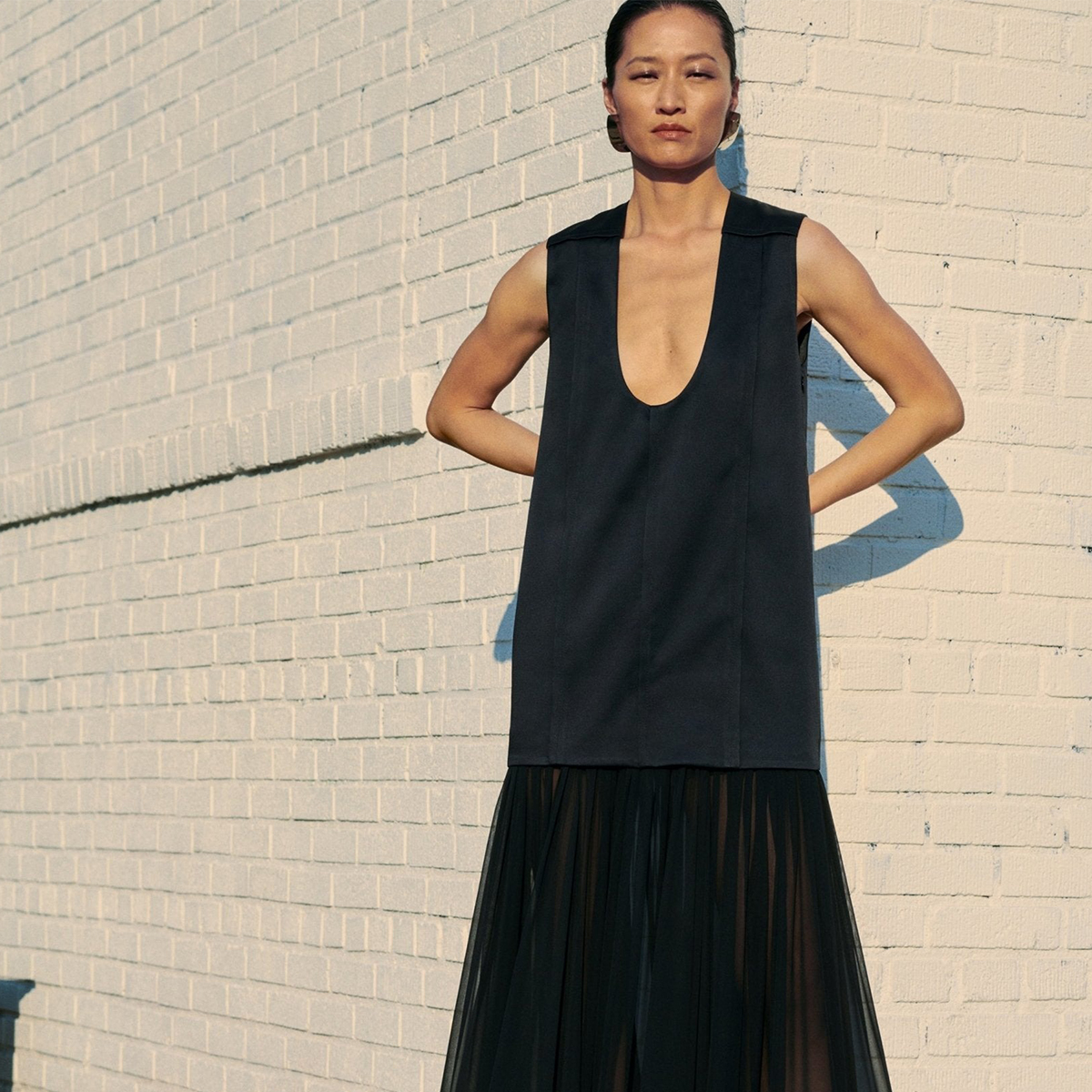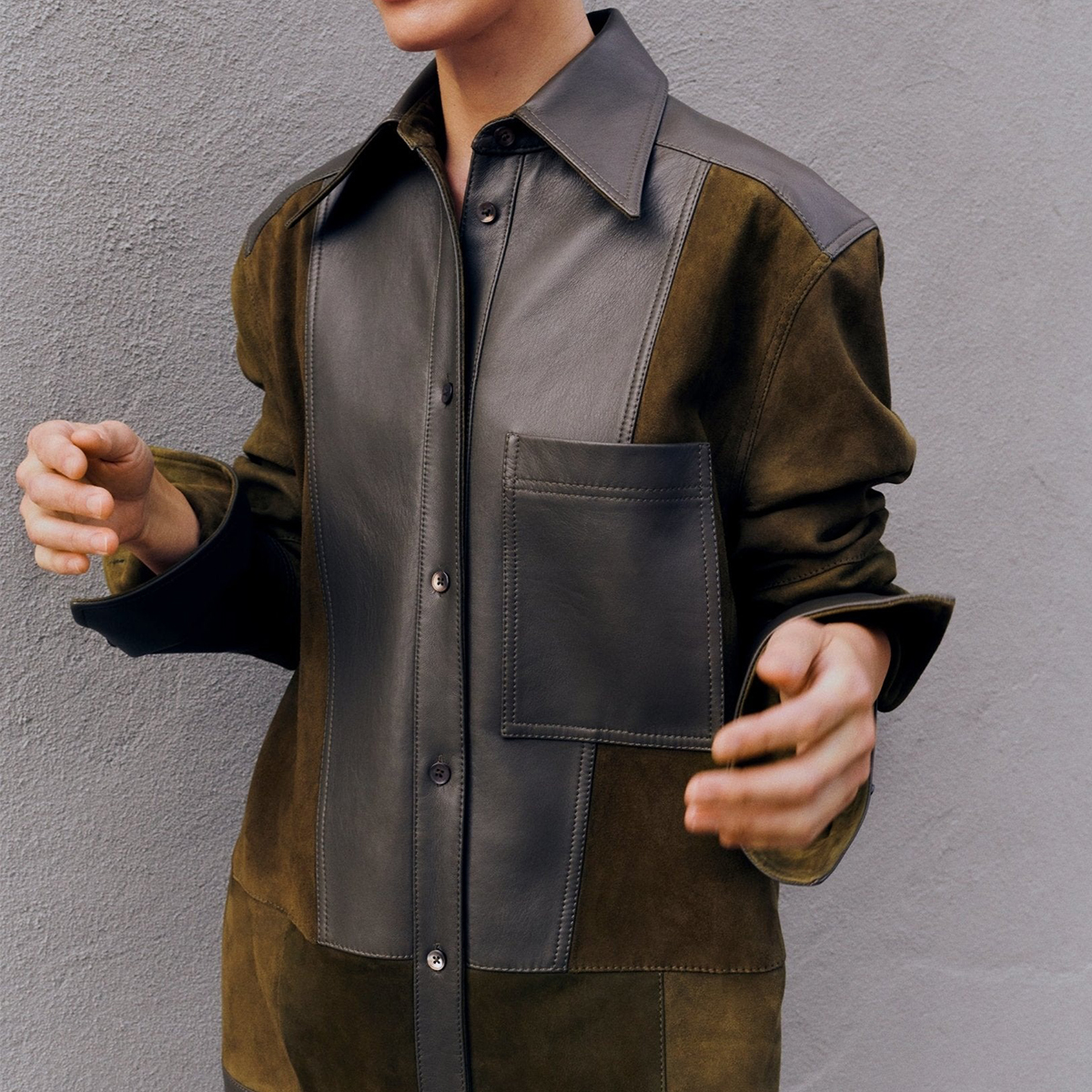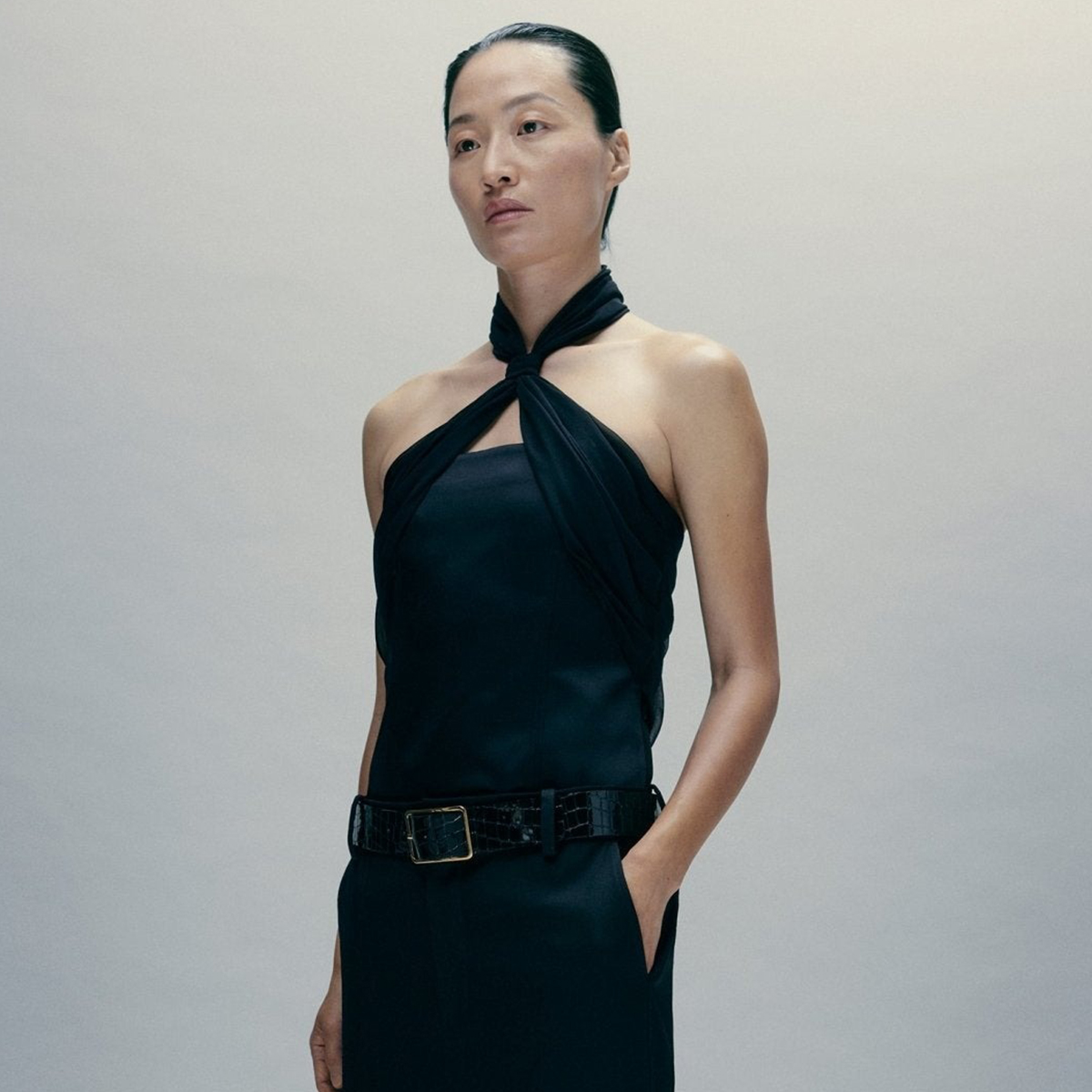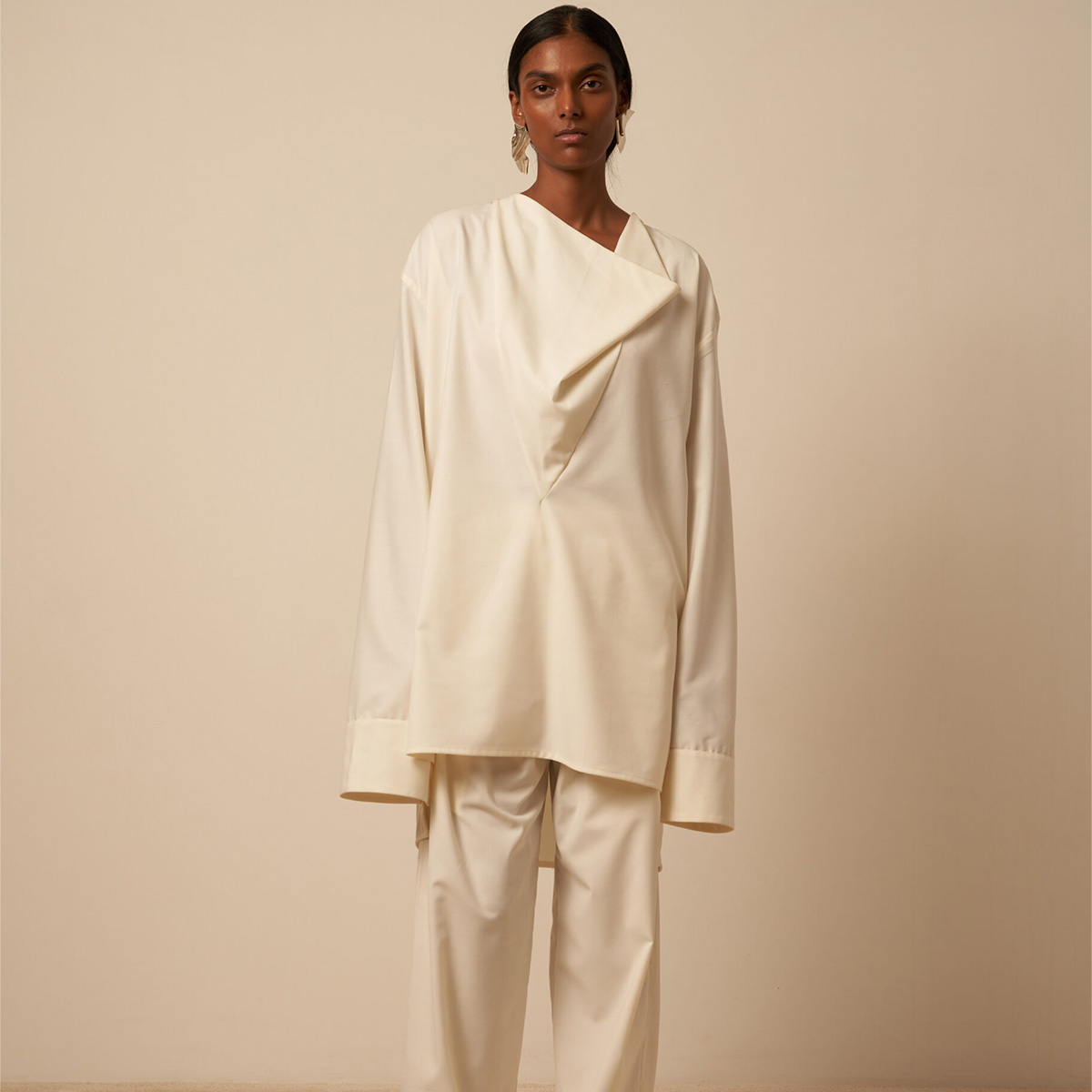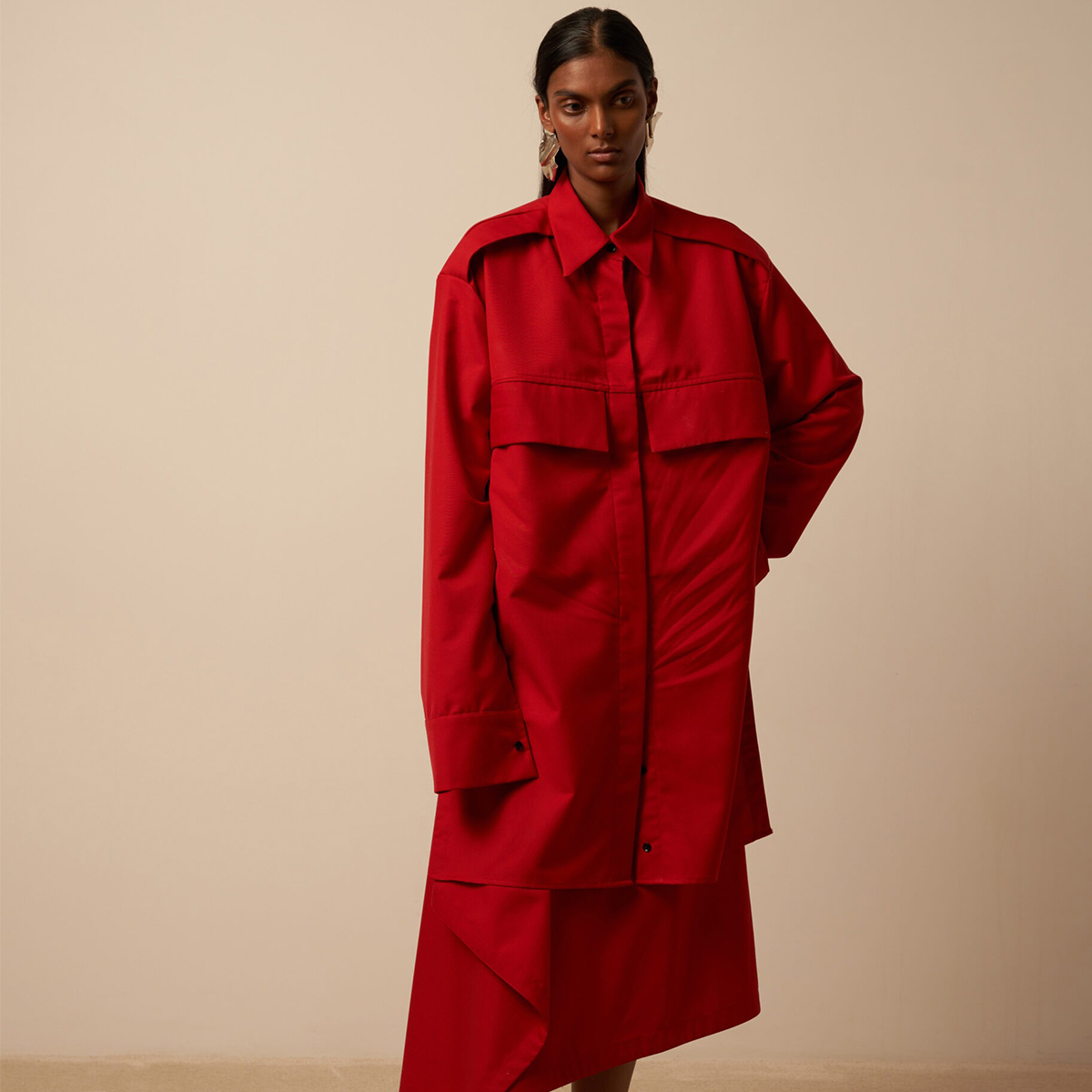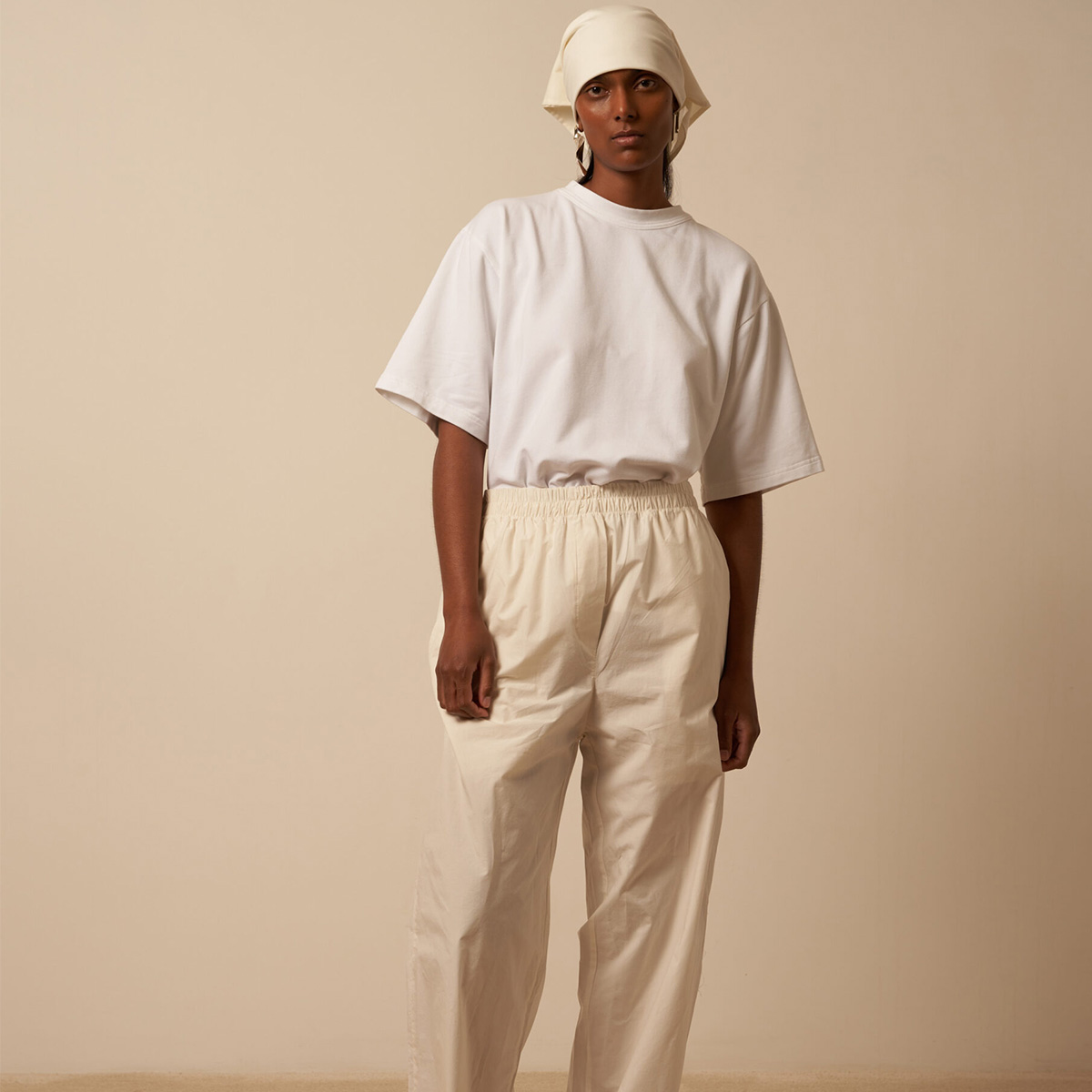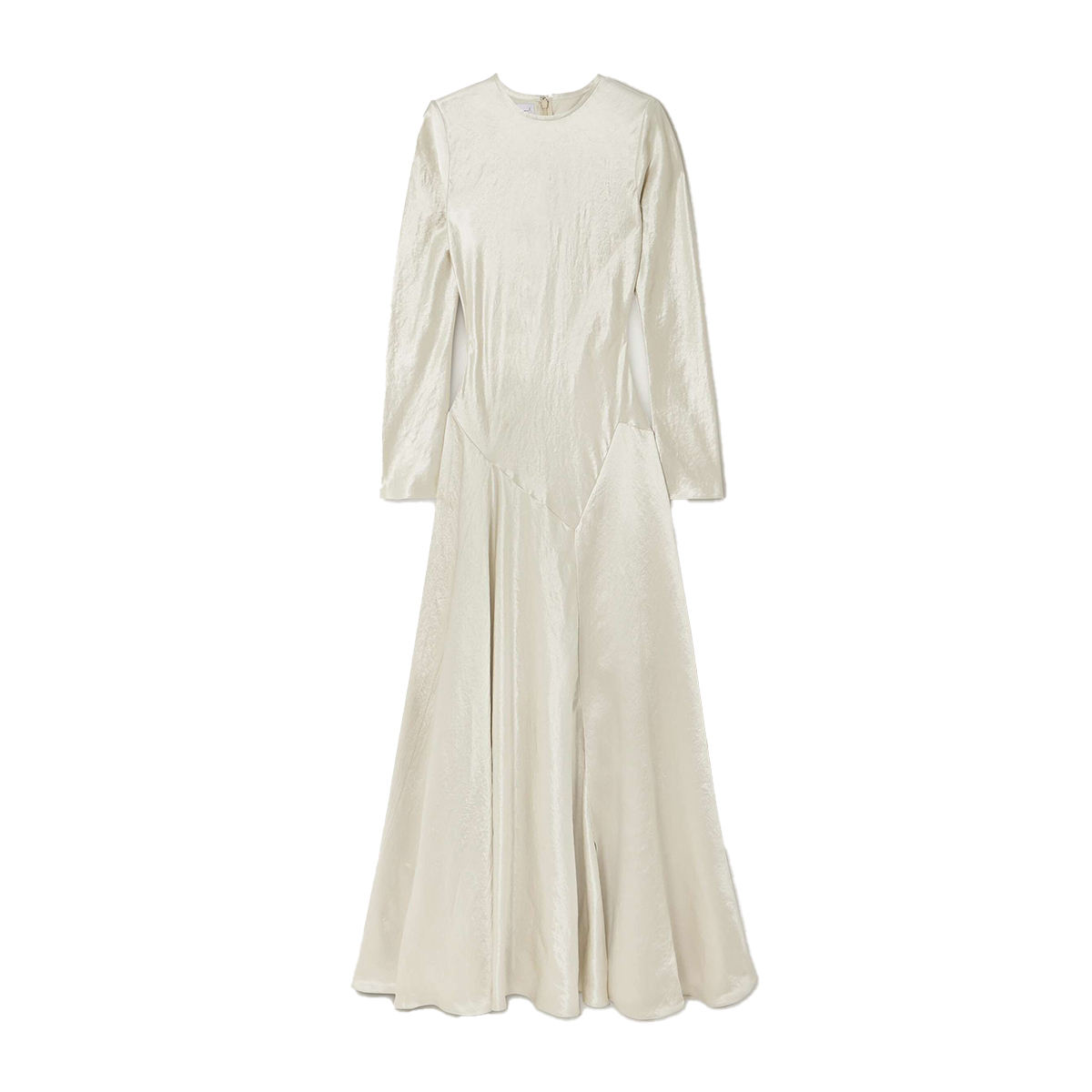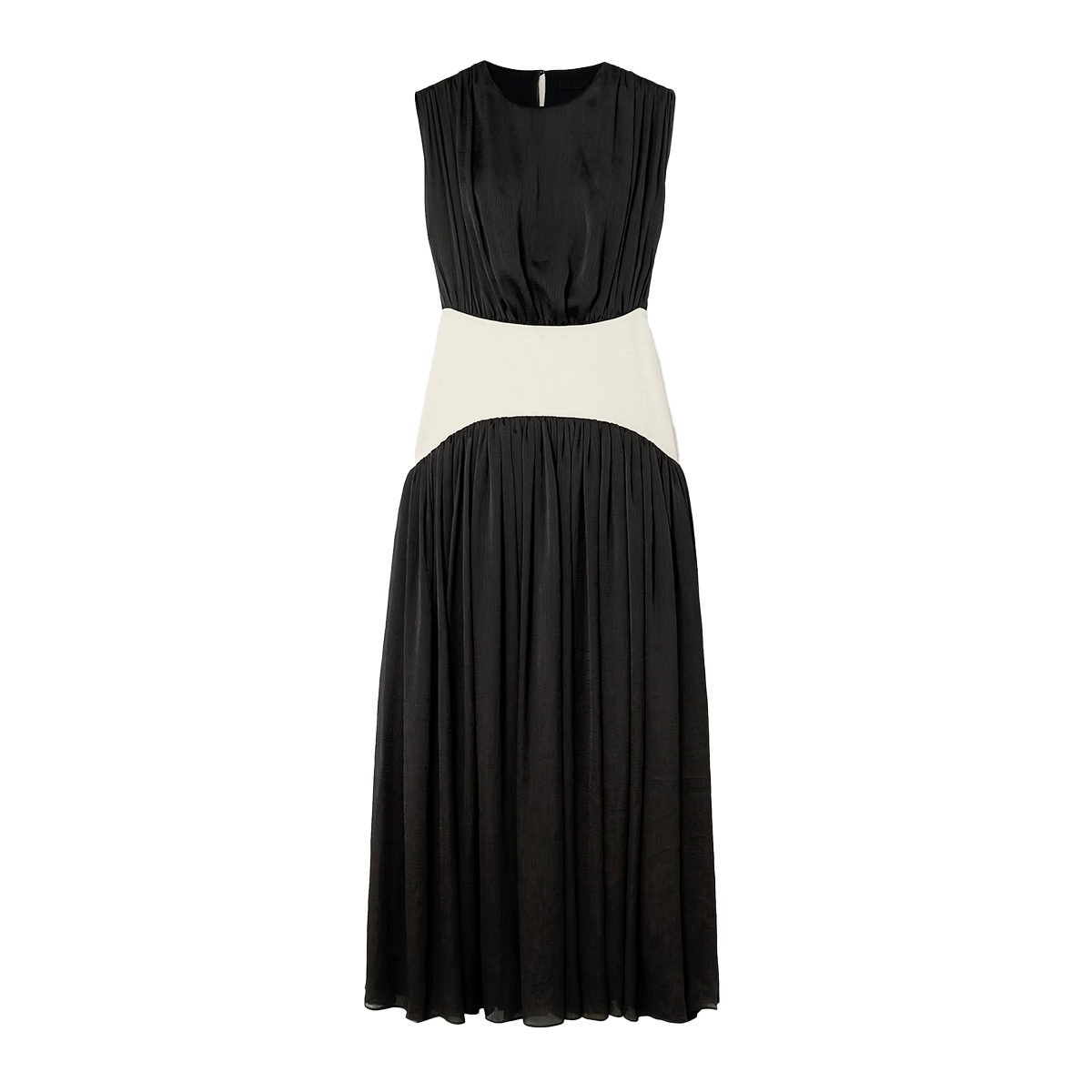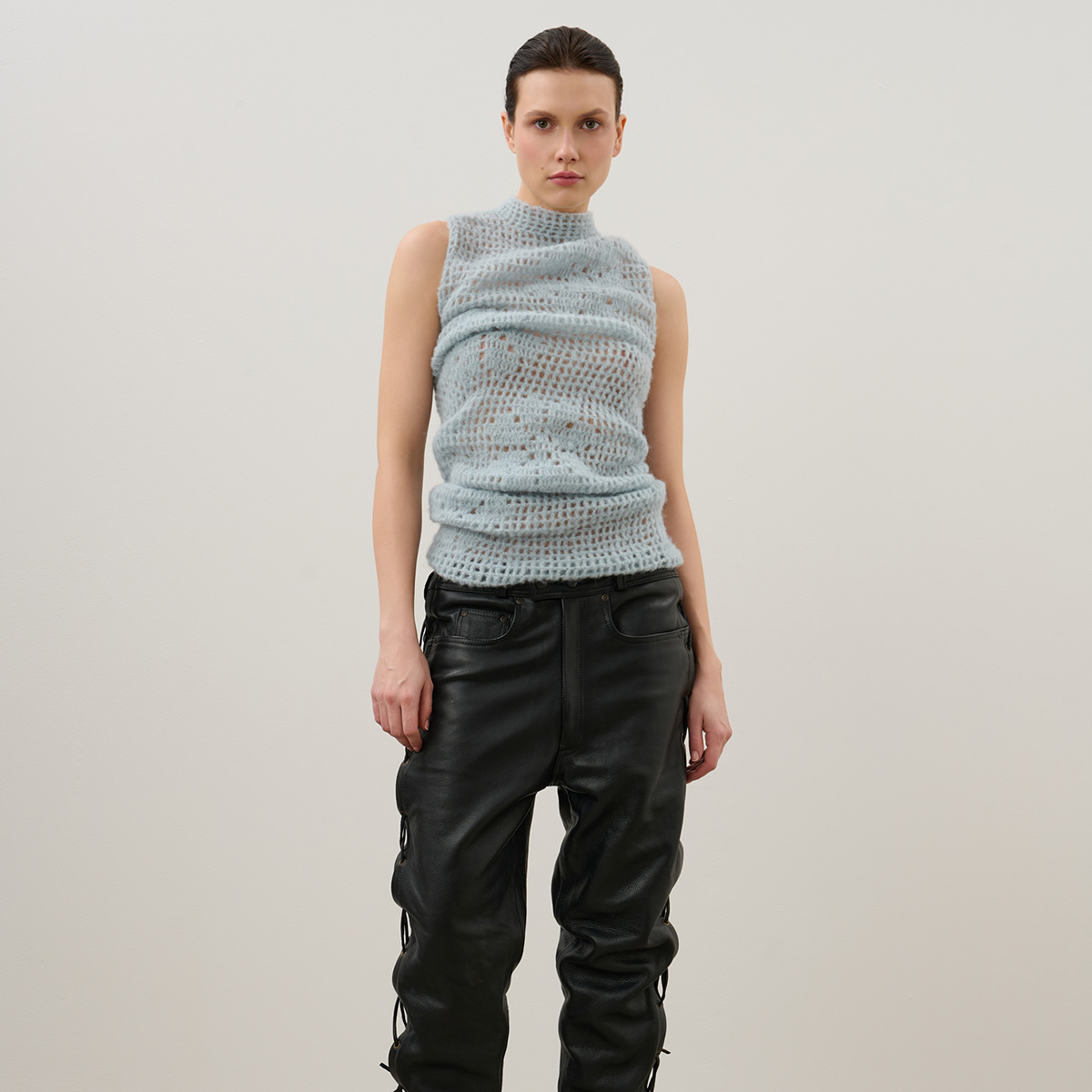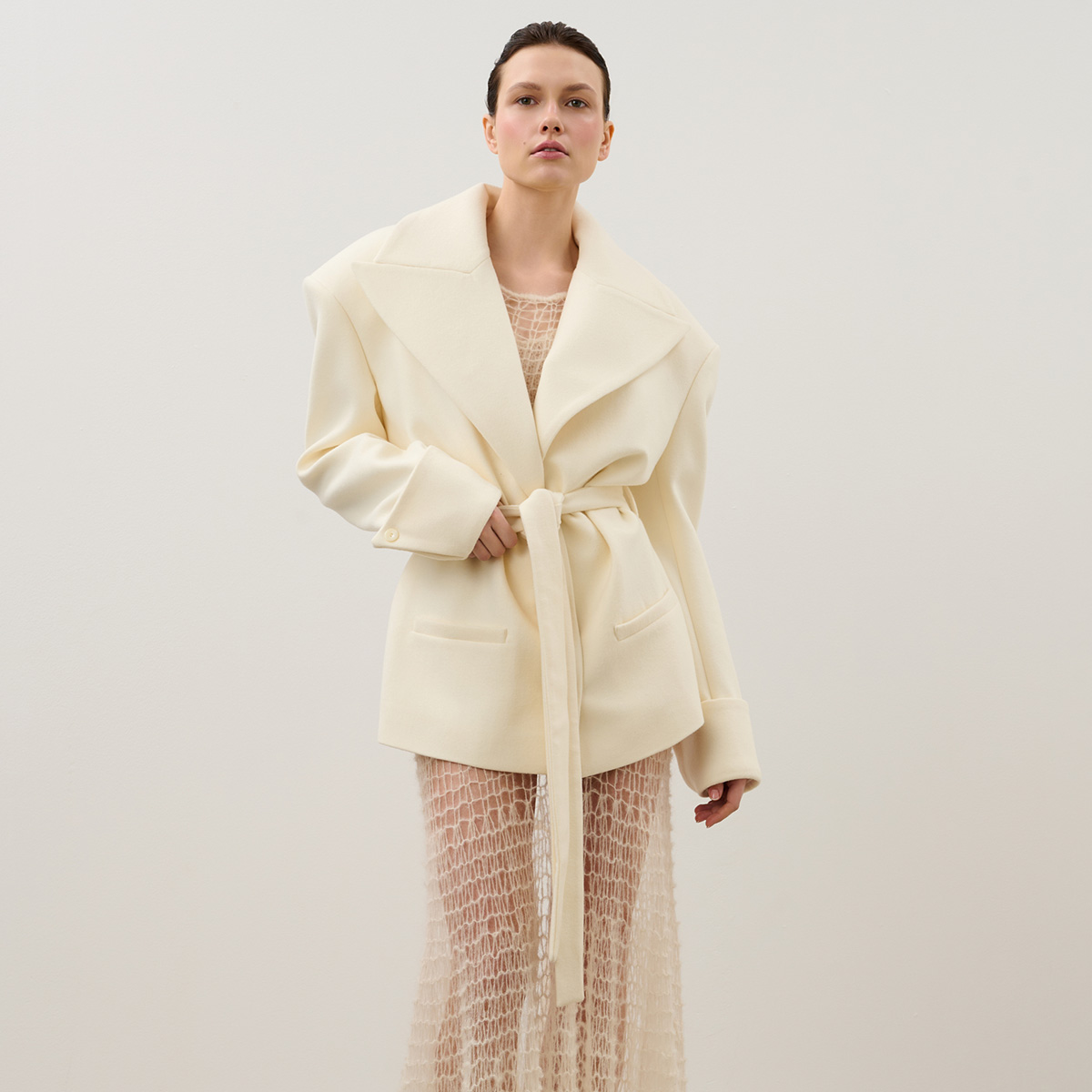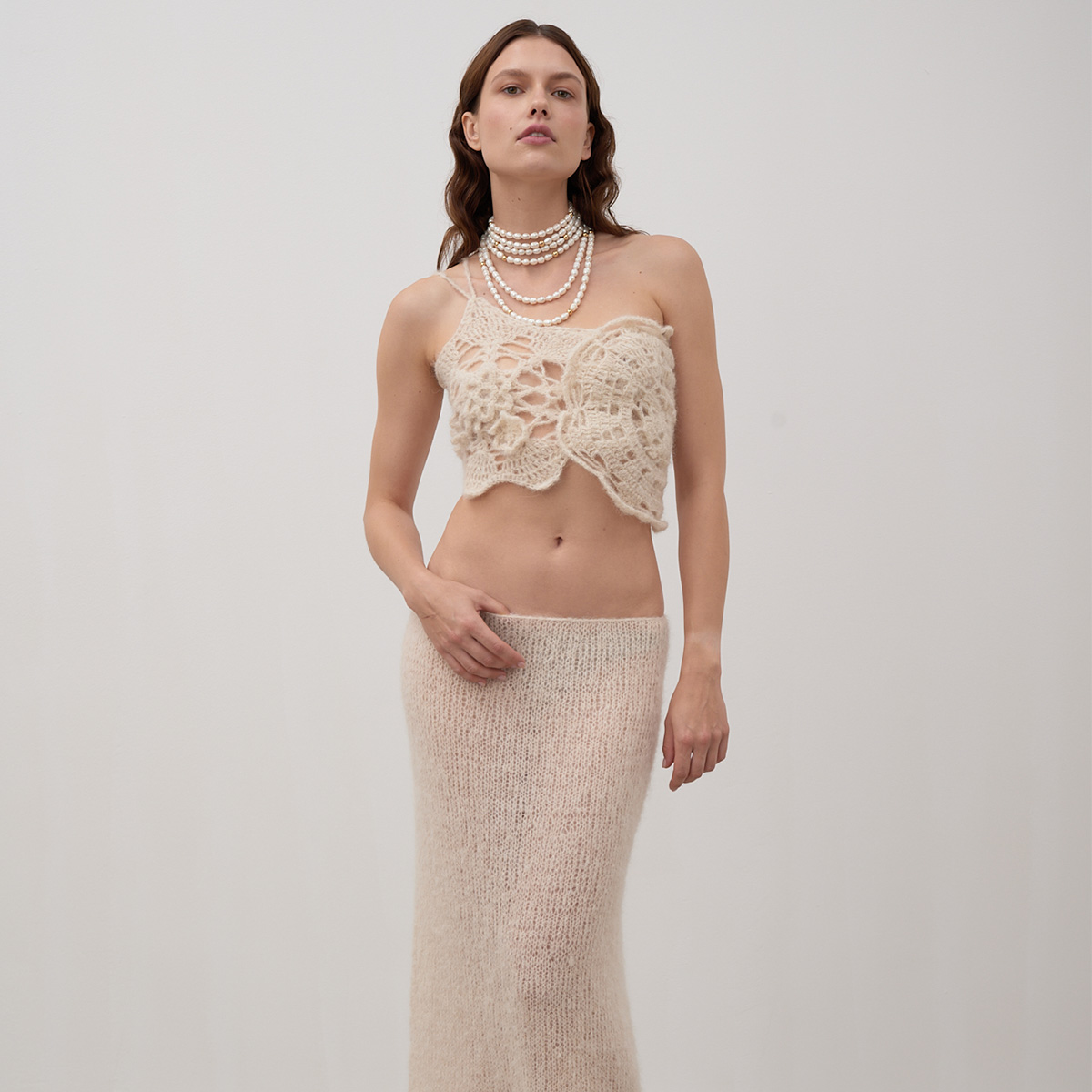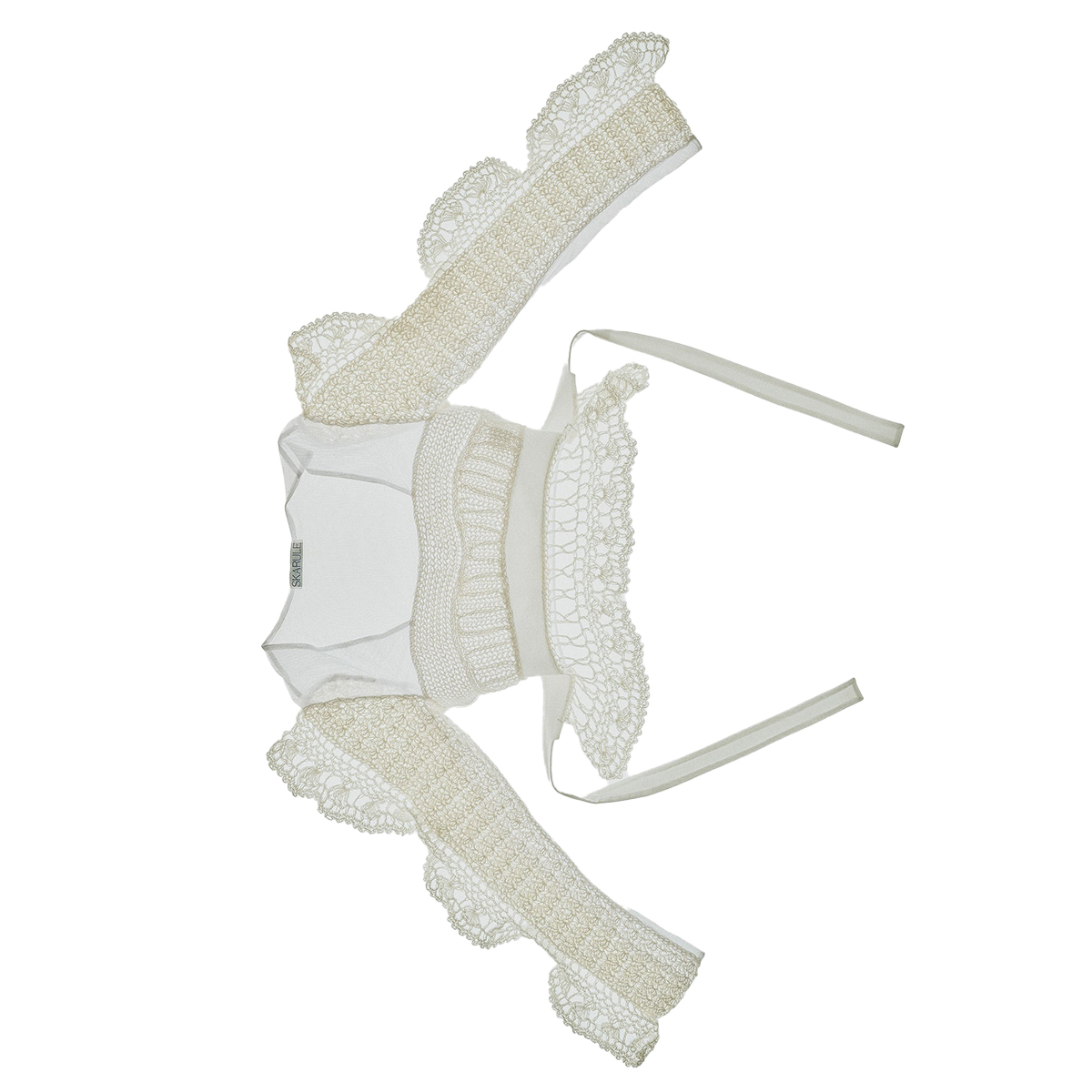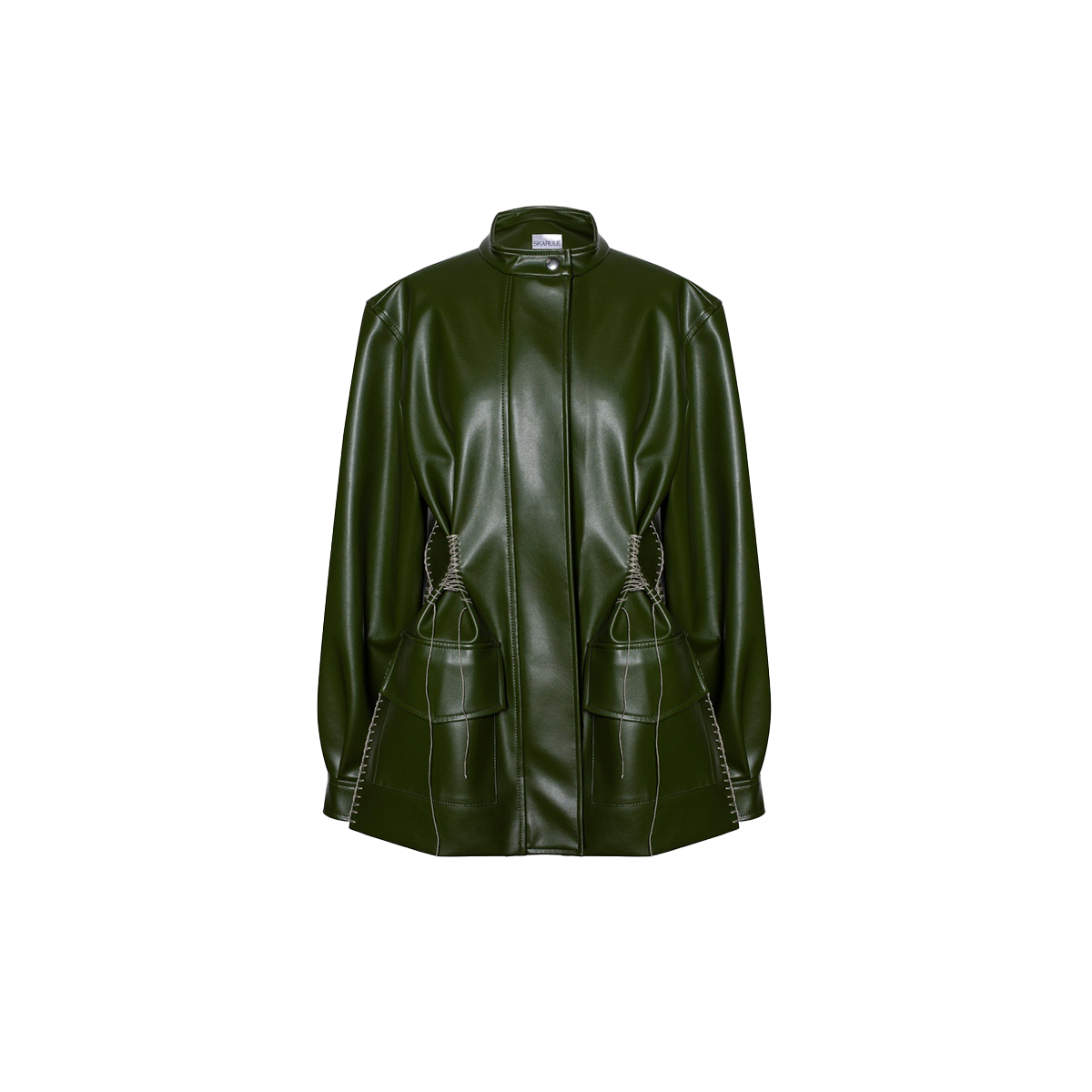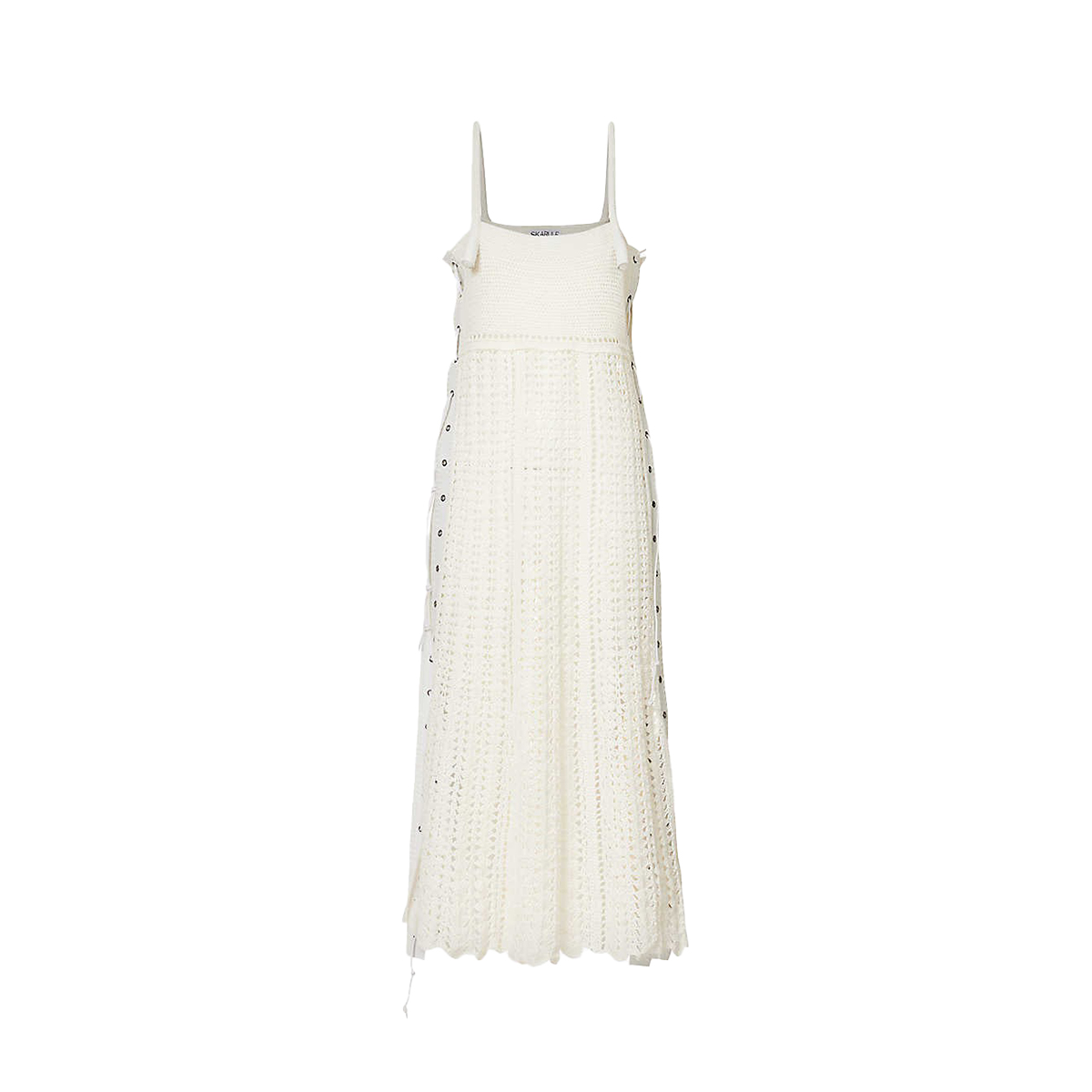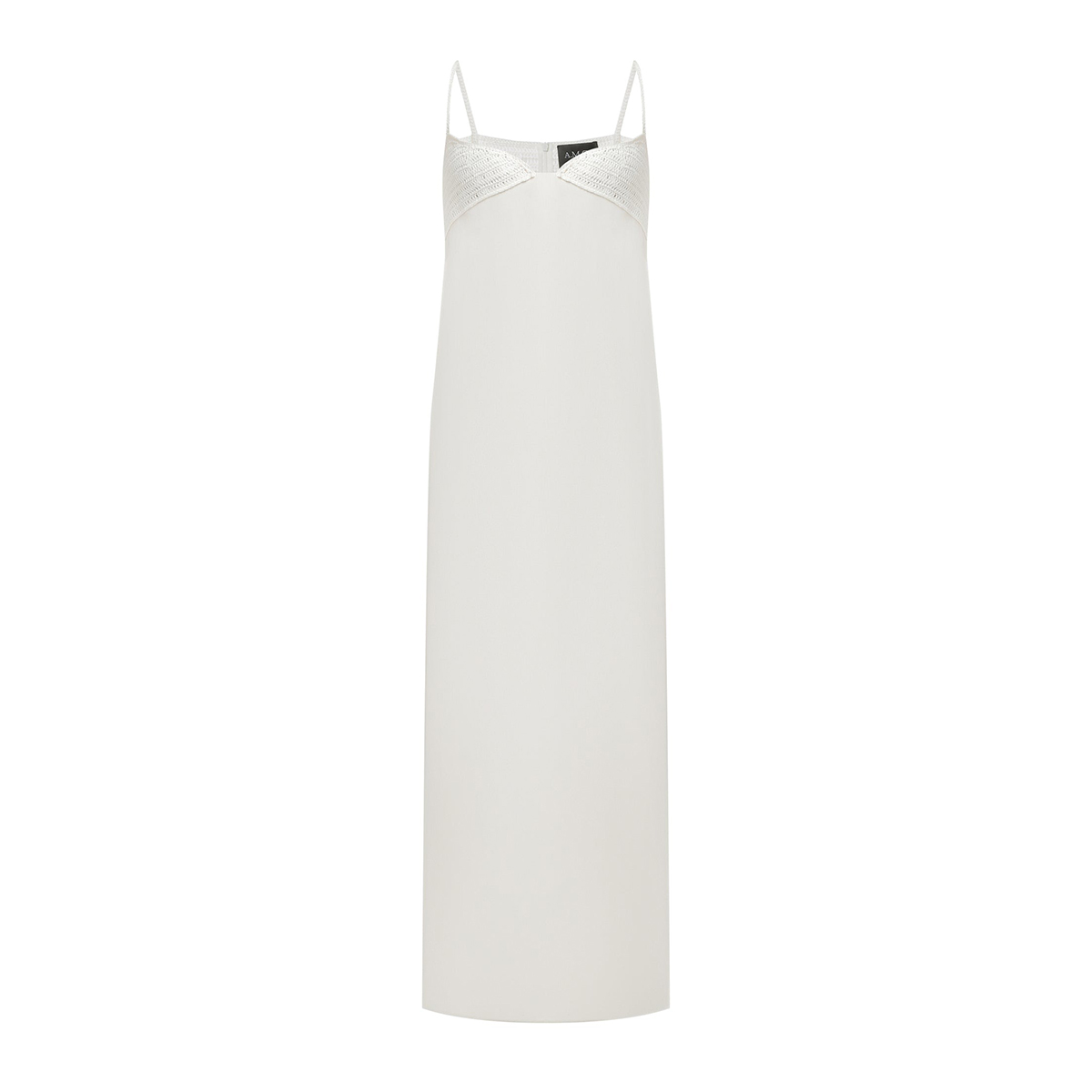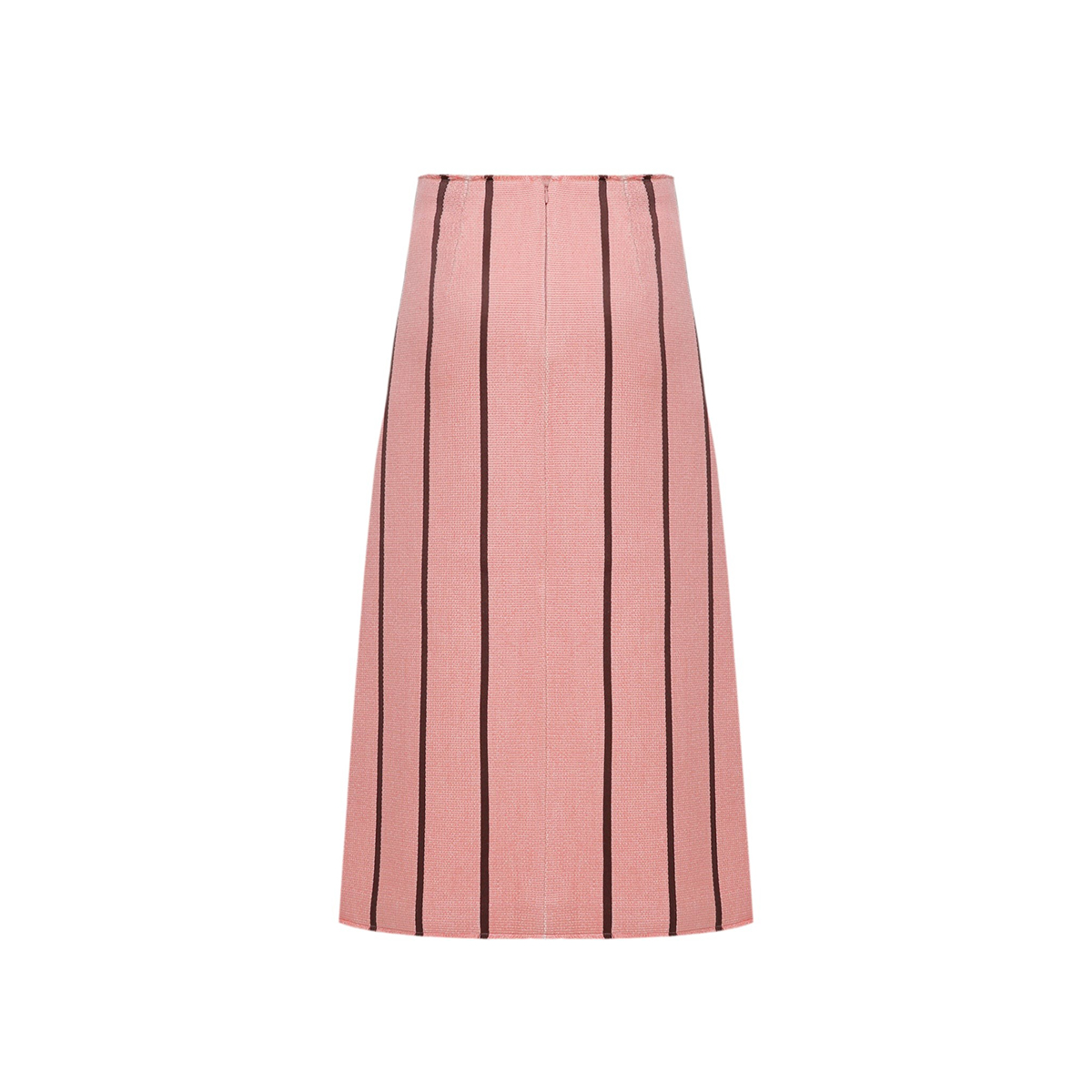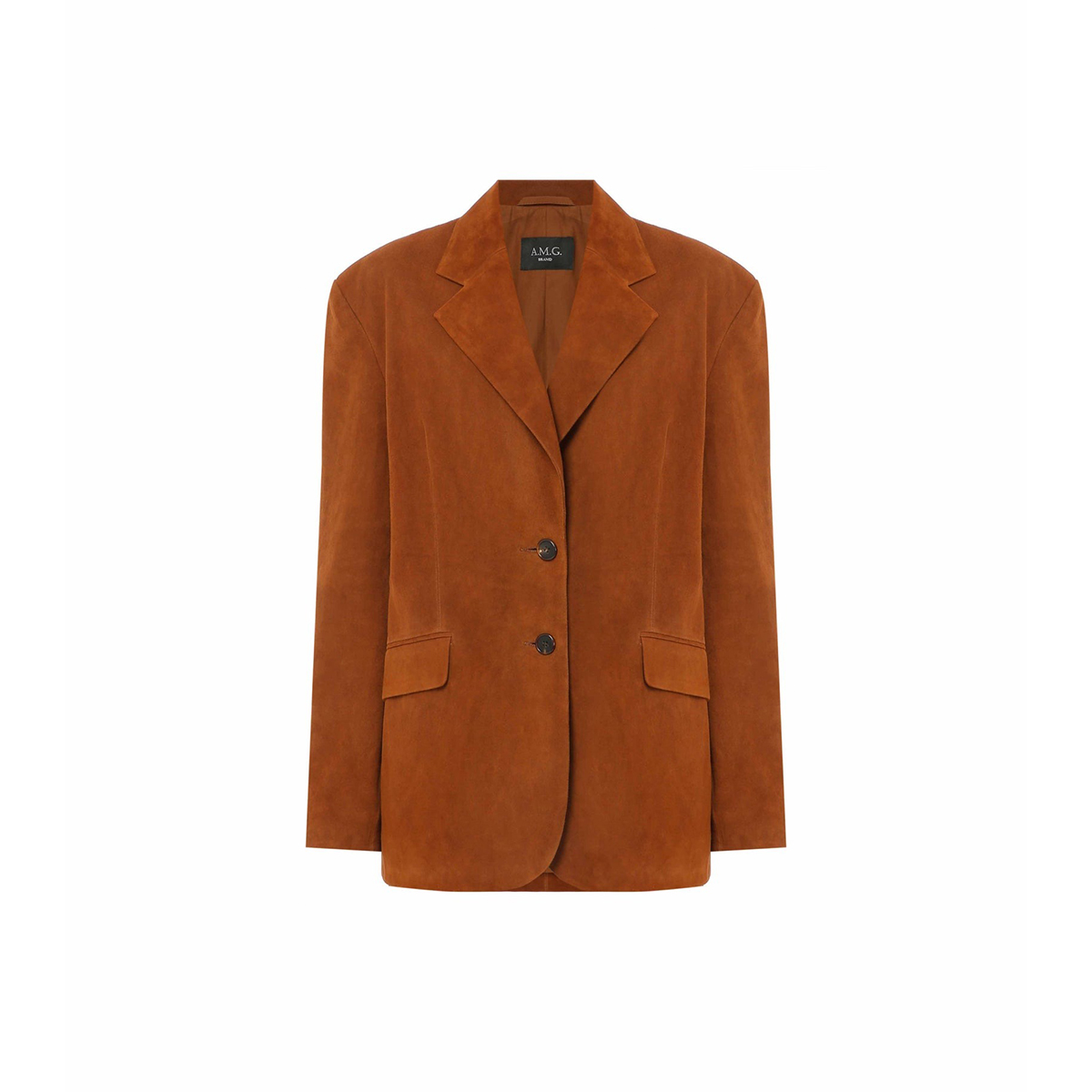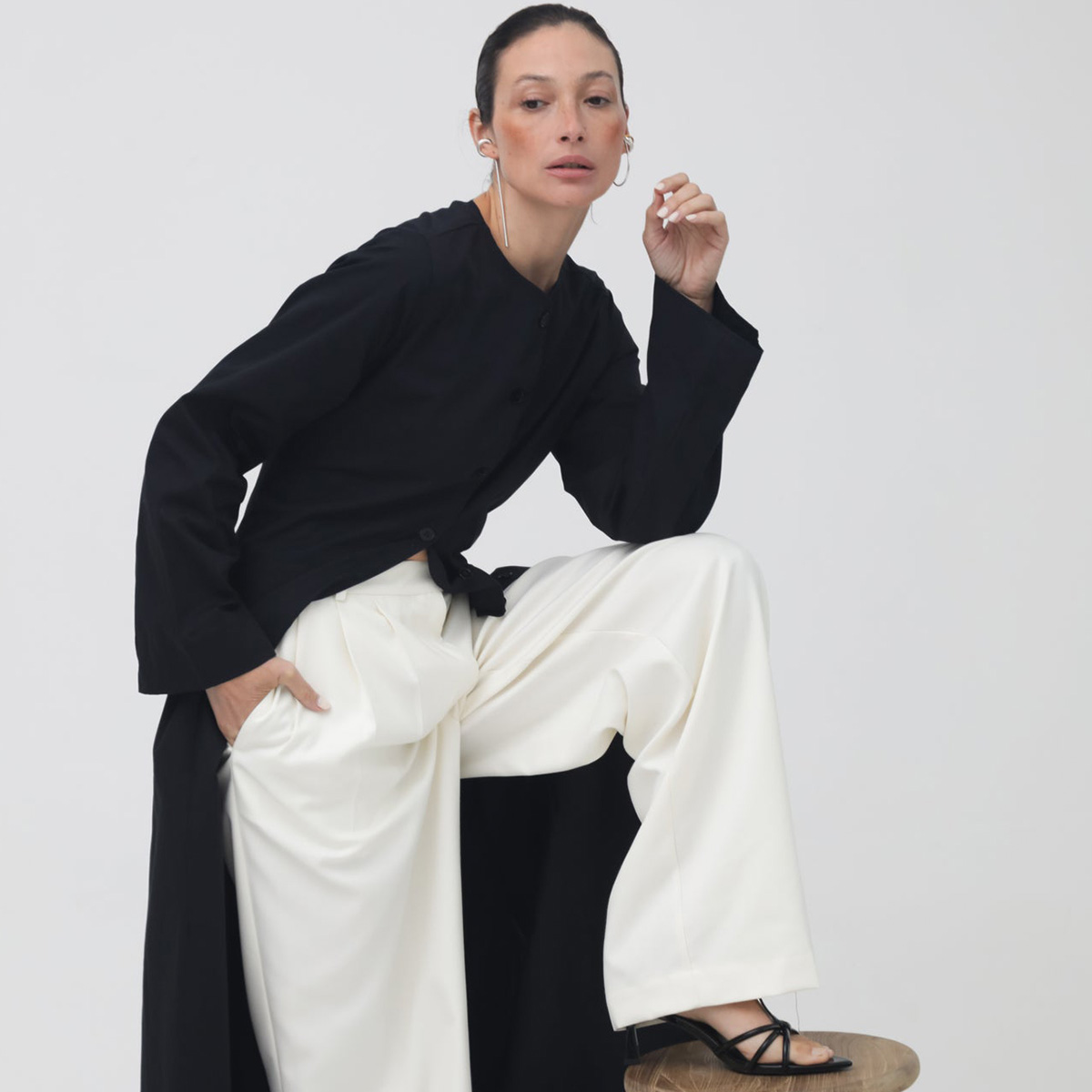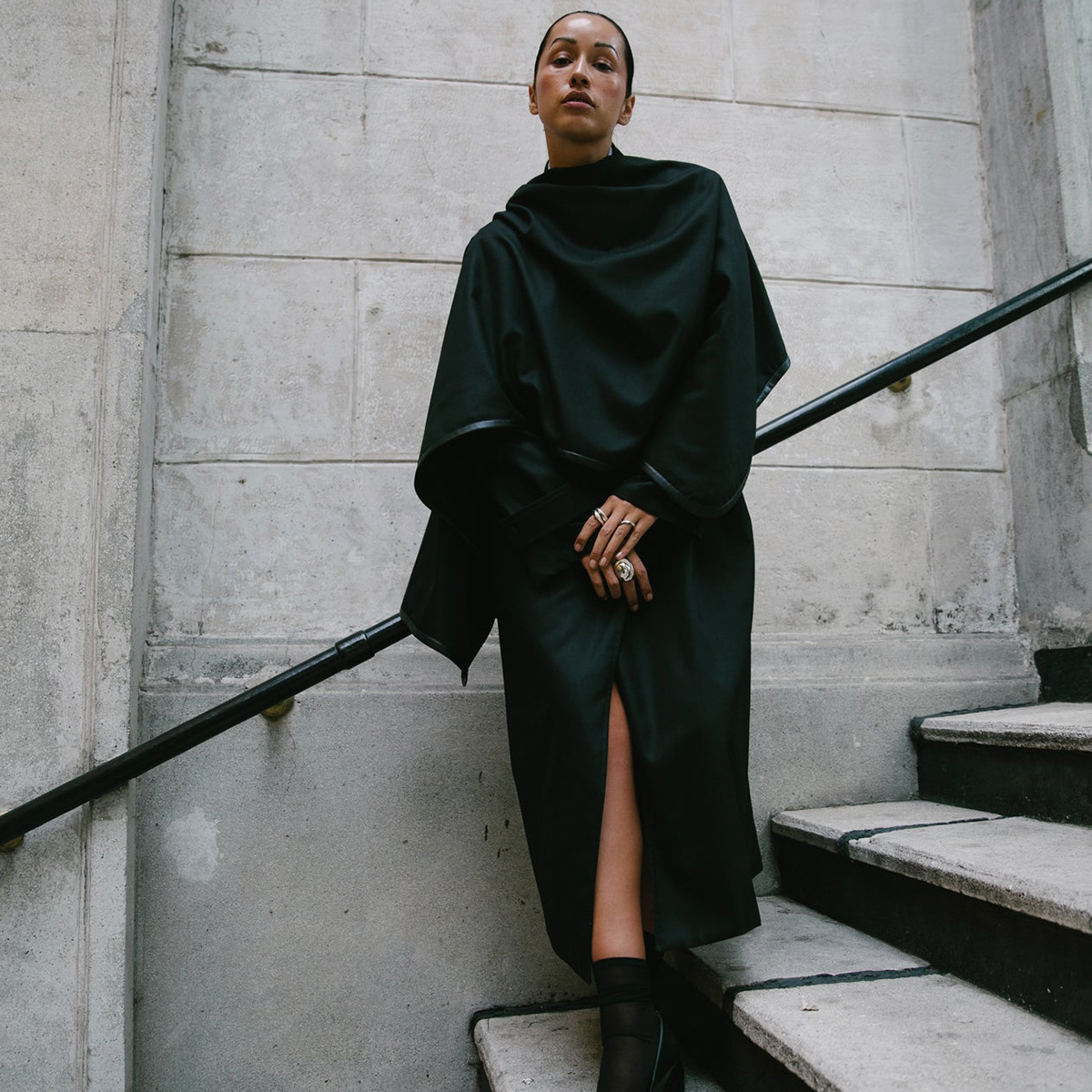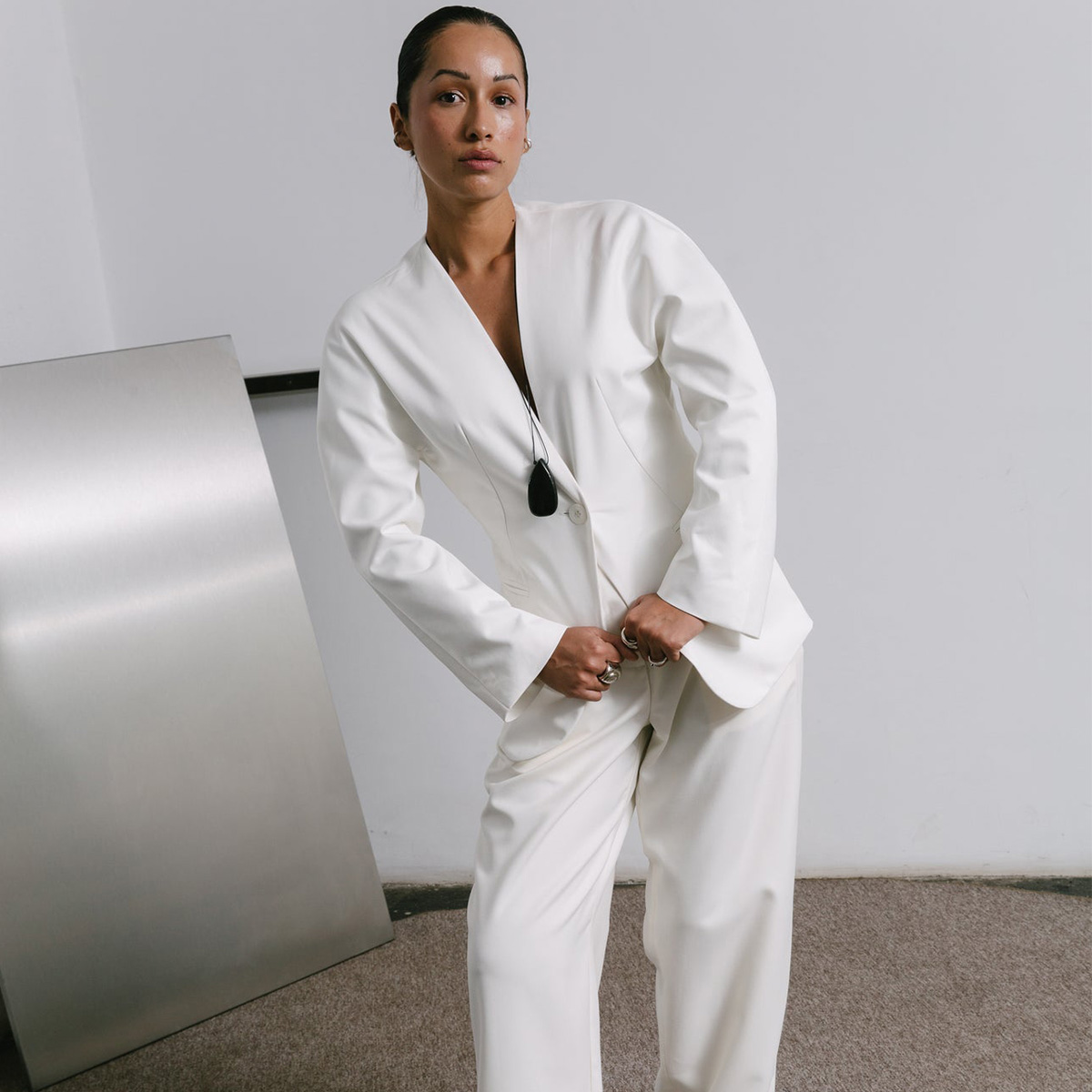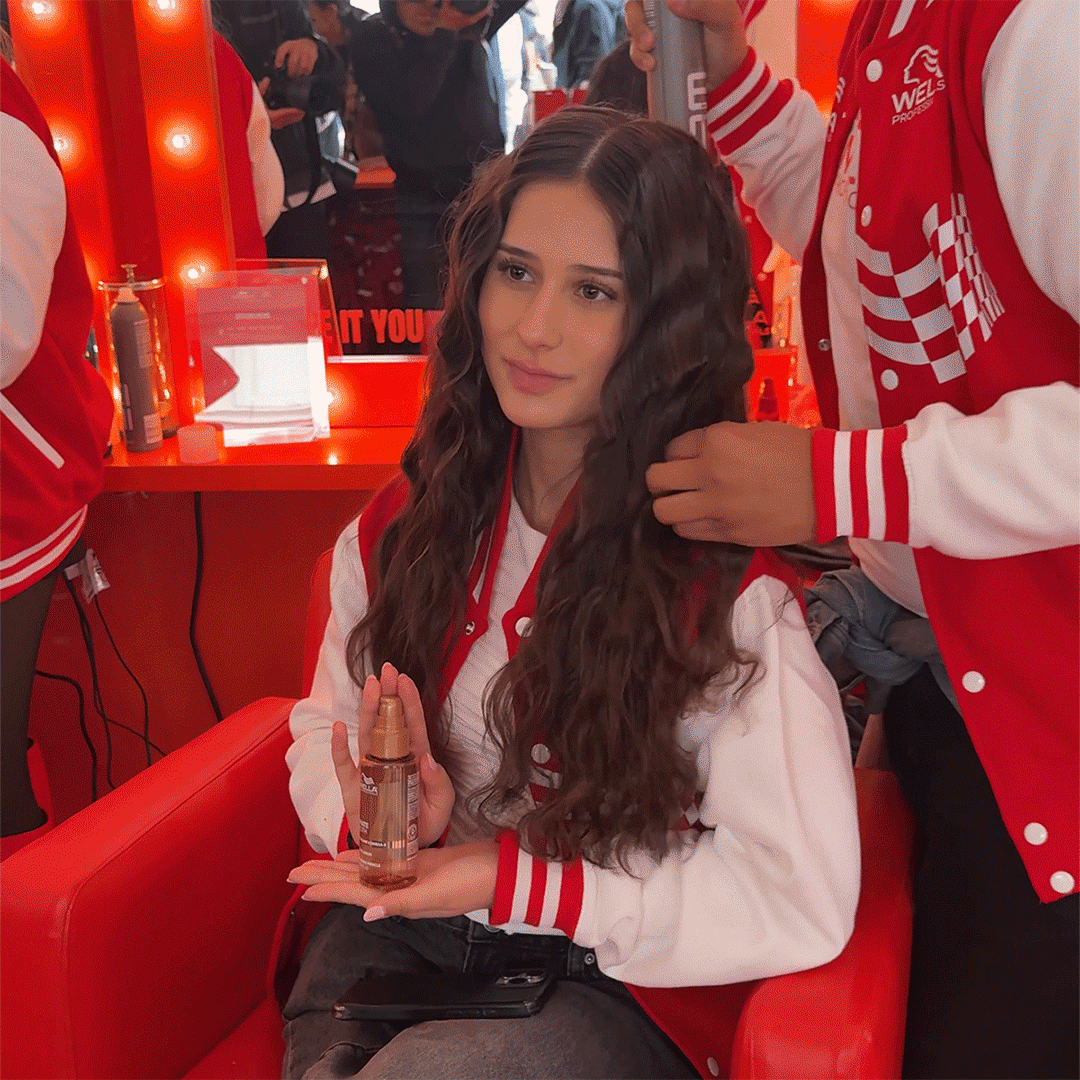From NYC to Johannesburg: Meet the 7 Designers That Make Up Fashion's New Guard

There's not exactly a shortage of brands in fashion. In fact, a scroll through any Who What Wear editor's Instagram feed will likely result in the discovery of at least one. While it can be hard to keep track of them all, it's never a bad idea to familiarize yourself with new perspectives. Every brand has a story, and depending on where its founders come from and manufacture their designs, it could be one you're wholly unfamiliar with. Shopping gets a bad reputation at times, but in reality, it can be a beautiful manner in which to learn about cultures you'd otherwise be unfamiliar with.
To help anyone transition out of the mindset where fashion is just about clothes and nothing more significant, we've hand-selected seven designers from around the world who each have unique stories they've chosen to share through garments. One hails from Riyadh, Saudi Arabia, while another chose Riga, Latvia, to start her brand. Below, you'll also meet designers who call Johannesburg, New York City, and Kyiv home. Read their stories and discover the clothing they've made it their life's work to design and manufacture. They're sharing pieces of their homes with the rest of the world—one dress, suit, or tailored separate at a time.
Without further ado, meet fashion's new guard, seven designers from across the globe who are shaping the industry's future.
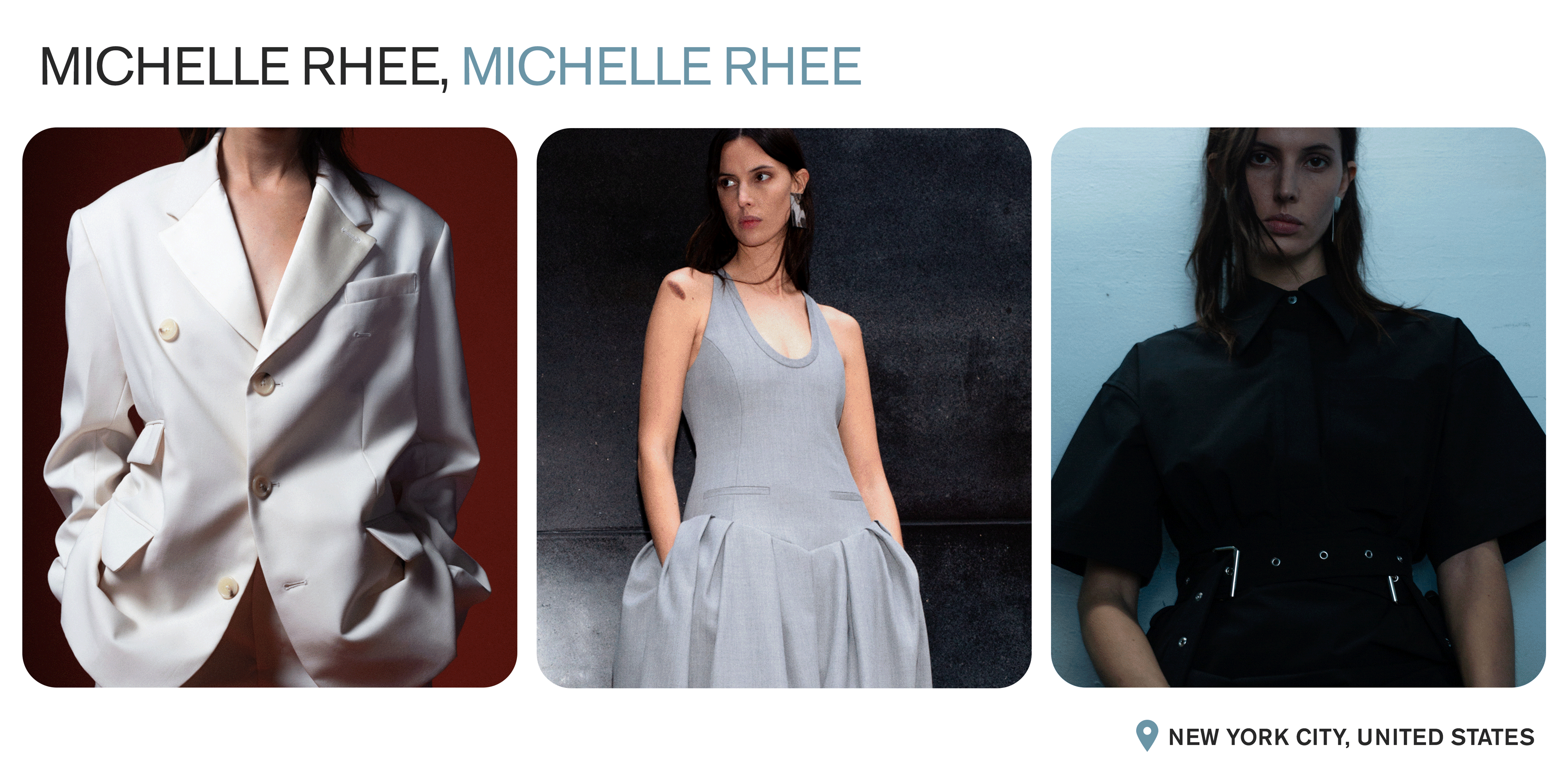
Michelle Rhee dipped her toe in practically every possible fashion-industry job, from editorial to styling to PR, before confirming what she'd known all along—design was the path for her. "Sketching, working with materials, and making was where I felt the most fulfilled," she says. After moving to New York City from Los Angeles and graduating from New York University, Rhee enrolled in a program at Parsons School of Design to officially kick off her design career.
The goal from day one was always to start her own brand and be in control of its story. "It was rooted deep, like a seed waiting for the right time to grow," she says. "I just felt really convinced to create a brand for other strong working women who wanted a wardrobe in a sharp but fully feminine and sophisticated way." Launching a fashion brand, though, isn't something one can do right away, which is why she worked for several other brands first, including Marc Jacobs, Area, and Derek Lam. She soaked in everything those environments could teach her and only went off on her own when she knew she was ready.
At the right time for her, Rhee began the process of creating her namesake brand, researching and meeting with factories and fabric mills. "I also creatively started to sketch, drape, and lay the foundations for what the brand would look like and what it would stand for," she says. According to Rhee, the woman she designs for possesses a quiet strength and resilience. She adds, "There's a certain grit and edge in her, but in the most graceful way. She has goals and places to be—she's complex." All of this comes together in the clothes she wears, which, Rhee explains, are focused on beauty, fit, quality, and timelessness. For inspiration, she prefers to look at art forms outside of the fashion world: "I'm always thinking about music, fine arts, atmosphere, environment, and even scents. It's about capturing the essence of this woman and inspiring her."
Since launching her brand in 2023, Rhee, unsurprisingly, has already dressed some of her city's most dynamic women, including Keri Russell and Cynthia Nixon, as well as others from around the world, like tennis sensation Maria Sharapova, Baby Reindeer actress Nava Mau, and Love Lies Bleeding actress Jena Malone.
Where do you go in New York City when inspiration runs dry?
I like to take walks—to get a coffee, to the park, wherever. Just walking alone can help restart my mind when I'm stuck. I love people-watching and going to bookstores, museums, and galleries. There's so much to be inspired by wherever you go.
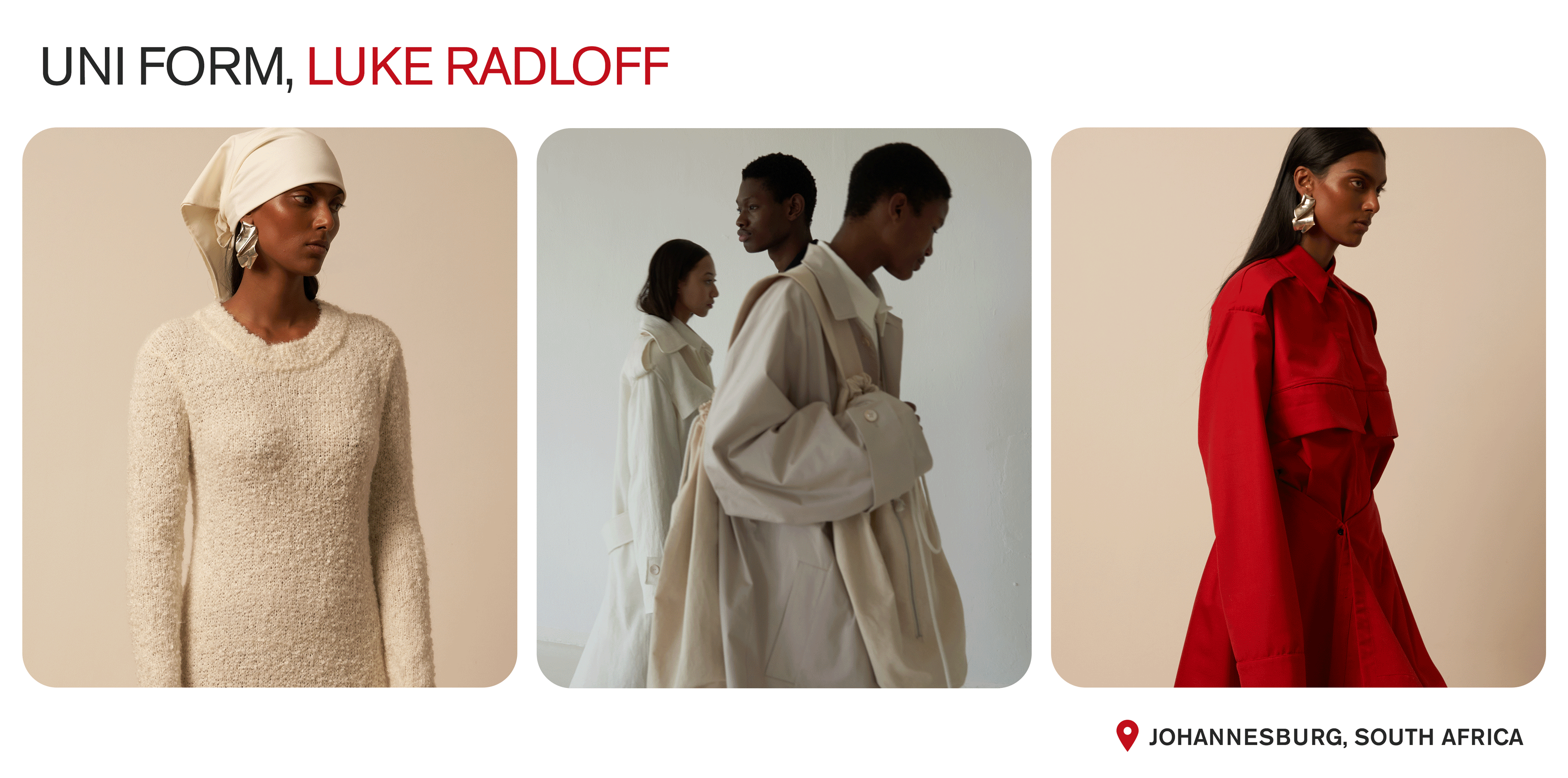
"When I was a child, I was shy, so I always looked for different ways to express myself," says South Africa–based designer Luke Radloff, referring to the inspiration behind the fashion brand that he founded in 2018. "I knew I wanted to do something creative in art or design. Upon realizing that emotions and perspectives can be conveyed through clothing collections, I decided to explore this avenue further."
Drawing from his extensive background in retail, design, production, and creative direction, Radloff embarked on an endeavor to position South Africa alongside leading fashion capitals worldwide. This venture is now known as Uni Form. "I want to help stimulate South Africa as a luxury manufacturing destination," says Radloff.
For Radloff, inspiration abounds in his home city, serving as an unending wellspring for his creativity. "The thing that distinguishes [Johannesburg] from other industrial capitals is this interesting intersection of work attire and personal style, which is usually perfectly captured during commutes and on the streets of Joburg, where traditional dress, sportswear, and uniforms are all styled together to create this very specific style," he says. This led Radloff to call his brand Uni Form, a name rooted in workwear that has taken and translated that unique style into ultra-contemporary, transeasonal collections that spotlight elevated classics filtered through the lens of a new South Africa.
In response to the pervasive influence of fast fashion, Radloff deliberately established a sustainable and ethical brand, making these core tenets of the brand's production process. "We place a strong emphasis on slow fashion and handmade, made-to-order garments with quality, consideration, painstaking attention to detail, and authenticity above all else," he says. "We aptly describe Uni Form as 'emotional tailoring,' encapsulating the emotional investment and dedication that underpin our pursuit of creating meaningful and luxurious fashion from our corner of the world."
Where do you go in Johannesburg when inspiration runs dry?
I get in my car and drive. No corner of Johannesburg or South Africa isn't beautiful, compelling, or humbling.
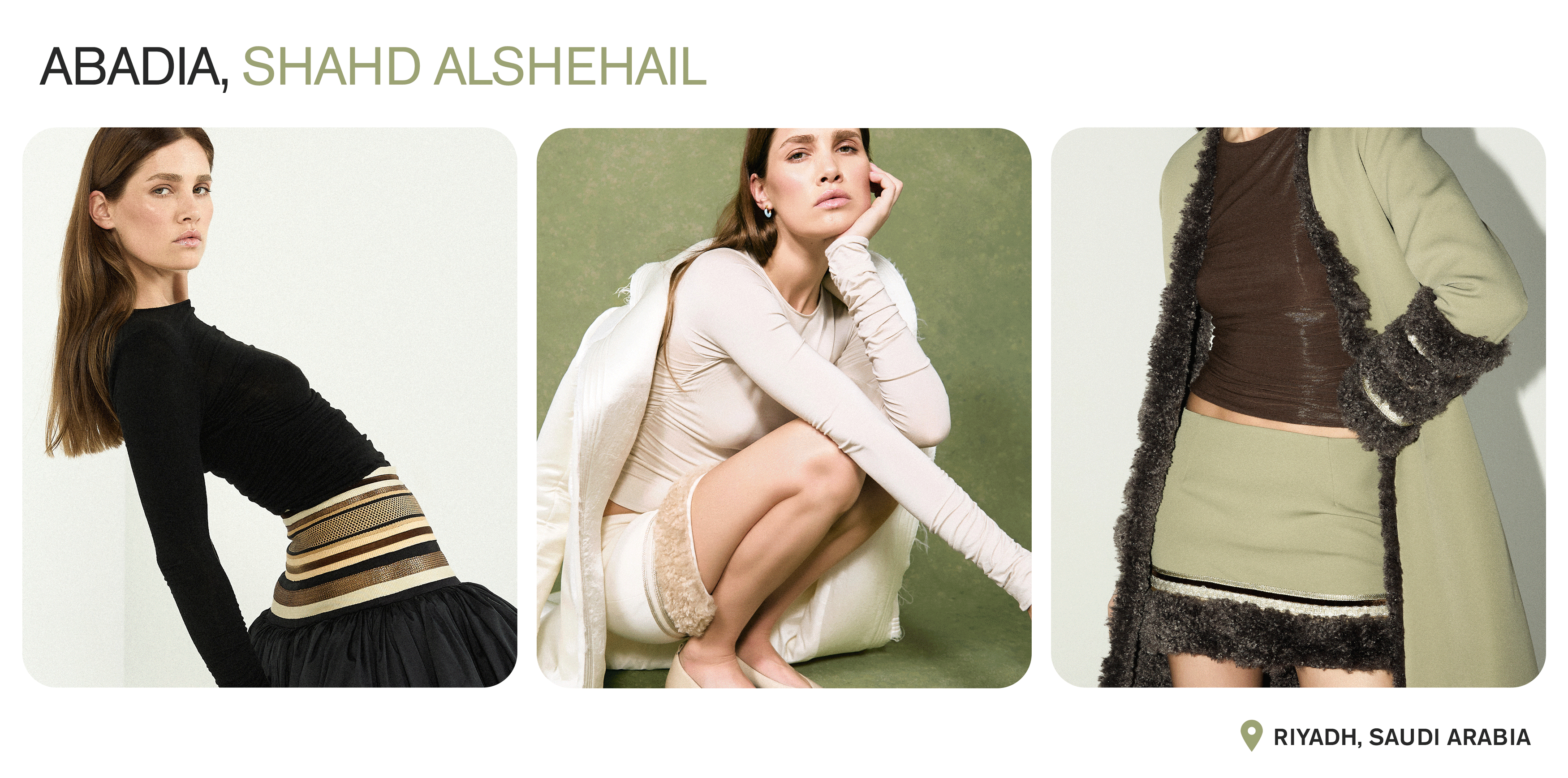
Shahd AlShehail didn't follow the same route into fashion that you traditionally hear about from designers—a lifelong interest followed by design school, apprenticeships, and assistant positions. Before founding her Saudi Arabian ready-to-wear label Abadia in 2018, she started a nonprofit focused on supply-chain traceability in the fashion space. The goal was "to ensure transparency, ethics, and sustainability." AlShehail adds, "I learned a lot from that experience and the change that needed to happen." Her findings spurred her to create a brand with these three pillars at its core, combining them with her desire to share the history and craftsmanship of her region "and breathe new life into [her] culture while supporting artisans." She launched Abadia in Riyadh specifically because of the city's spirit of optimism and growth, which she says is "infectious and inspiring to anyone, Saudi or otherwise."
According to AlShehail, marrying storytelling and ethics has allowed Abadia to maintain a strong vision since day one.
To further emphasize its importance, AlShehail reminds herself and her team of this vision daily and incorporates it in every step of the design and production process. "As a luxury brand committed to being ethically run, it is important to us that in making decisions—big or small—we are guided by our core values and are transparent in how we do it," she says. Starting with materials, Abadia uses a combination of natural and organic fibers, innovative fabrication techniques like recycled fiber fur and recycled polyester, and luxury deadstock fabrics. As for production, Abadia's entire product line is sampled and produced either in-house or with its partners in the United Arab Emirates. "We know each and every one working for the brand and ensure that they are remunerated fairly and treated well," AlShehail says.
With an eye on every step of the process, AlShehail can ensure that her vision for Abadia never falters and corners are never cut. The result is a product line seeped in luxury, right down to the minute details that are added by local artisans. "We aim to generate sustainable employment for these women for years to come as well as preserve the craftsmanship and heritage of the region," she says. Aesthetically, AlShehail describes Abadia as a blend of feminine ease and masculine structure, maximalism and minimalism. Her overall goal is to create fashion that's timeless rather than trendy. For her, it's all about balance because women today are multidimensional, and their fashion choices should echo their personal values and lifestyles. She says, "[The Abadia woman] seeks out unique pieces, cares about the impact of her decisions on people and the environment, and takes pride in her personal and cultural stories."
Where do you go in Riyadh when inspiration runs dry?
I love going for a walk at Wadi Hanifah. There is such a beautiful contrast between the hard rocks and the comfort of the palm trees. Growing up in the largest date palm tree oasis in the world (Al-Ahsa), I have always been drawn to palm trees, offering shelter and protection and a living connection to history. They live for generations, so the same tree my grandfather sat under will be the one my children get to see. Although they did not meet him, they can be physically connected to him through it.
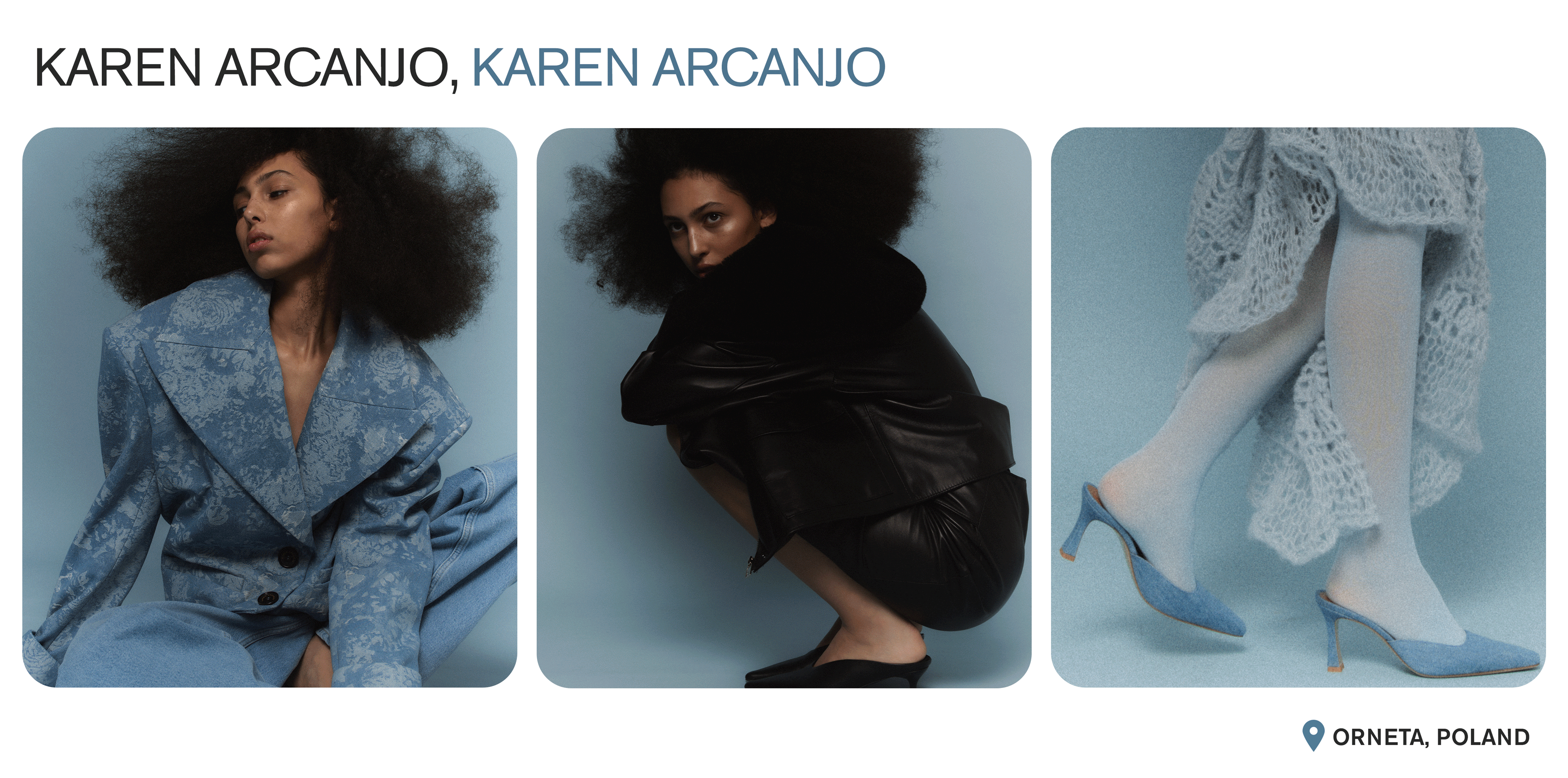
Since she was a child, Karen Arcanjo-Nazar has been immersed in the world of fashion. She was greatly influenced by her mother, who inspired her to pursue her label, Karen Arcanjo. In 2021, the brand was born with a strong and unwavering mission to promote female empowerment, a value deeply rooted in Arcanjo-Nazar's experiences and community.
Karen Arcanjo's ethos revolves around meticulous craftsmanship and diligent labor. It collaborates with independent artisans from all over Poland to incorporate high-quality fabrics, hand-knitted pieces, and hand-embroidered ornaments that bear the unmistakable mark of human touch—something that can't be replicated by machines. "This dimension of action and manual work allows the clothes coming out of the studio to be individual, beautiful, and have soul," Arcanjo-Nazar shares. "These mindful practices combined with sustainability is an important part of our present and future, which is why we only produce two collections a year."
Before designing new collections, Arcanjo-Nazar looks inward. "I consider the gaps in my own wardrobe to ensure that my brand offers reliable and stylish choices for customers," she says. She also draws inspiration from her surroundings and personal passions, such as architecture and art, to infuse her designs with love and creativity. "Living in Orneta, where our most beautiful and mystical hand-knitted pieces are created, allows me to breathe, clear my head, gather my thoughts, and find inspiration," she says. "This town is a place with soul; there is something nostalgic and attractive about it." Nature also plays a significant role in her creative process. "I often seek solace and fresh views during peaceful walks in the forest with my family," she explains. "This moment calms and relaxes me, giving me space for new ideas."
Arcanjo-Nazar envisions her clothes having a voice of their own, symbolizing perfection, precision, and craftsmanship. "If Karen Arcanjo's clothes could talk, they would whisper," she says. "They would choose their words not to lose any of their mystery. They would talk about their perfection, precision, and craftsmanship, which has been in the brand's DNA. They would tell stories about classics becoming luxury and timeless sophistication."
Where do you go in Orneta when inspiration runs dry?
I enjoy visiting Gdańsk or Warsaw when I miss the city life. I like observing how women behave, change, and dress. It tells a lot about their self-confidence. In Warsaw, I often visit the Palace on the Water in the Royal Castle Gardens, one of my absolute favorite spots in the city. Every time I go there, I get chills. I also love shopping on Mokotowska Street, where my favorite Polish jewelry brands are.

In today's fast-paced world, slowing down is often a challenge. However, for designer Sabine Skarule and her eponymous brand, Skarule, slowness is paramount. "It is intricately woven into the very essence of Skarule," she says. This profound appreciation for the unhurried pace of life was the catalyst for the creation of her brand. Amid the backdrop of the pandemic, Skarule found solace in the unhurried rhythms of life and sought to encapsulate the interplay between idleness and the yearning it evokes through clothing. "The moments of leisure that accompany [slowness] are integral to my brand and serve as a testament to a life well-lived and work well-executed," she elaborates.
Since its inception in 2020, Skarule has curated a distinct aesthetic, deftly translating emotions and moods into effortlessly chic contemporary apparel. The brand champions sustainable practices inherent in slow fashion by collaborating with local weavers, knitters, and crocheters. It also assumes a broader stance by advocating for mindfulness and technical finesse. Each collection incorporates many elements, crafts, and techniques that resonate emotionally and spiritually—reminiscent of a meticulously crafted piece of art. "Creating clothing collections is almost a spiritual experience, like elaborate research and constant conversations with those involved," says Skarule.
To achieve this, Skarule—who won the H&M Design Award in 2020—carefully selects her materials. She uses a variety of sustainable fabrics, including cactus leather from Mexico; OEKO-TEX-, bluesign-, and GOTS-certified materials; and Ecoblue fabrics made from recycled plastic bottles. She also uses chemical-free Latvian yarns as well as the finest organic wool and cotton. These materials are filled with cultural significance and identity, reflecting the unique environment of Riga, her hometown. "Growing up in the aftermath of the Soviet era meant making the most of what was readily available and never discarding anything," says Skarule. "The tears, patches, and handcrafted details in my designs echo that mindset. They exude a sense of familiarity, serving as a poignant reminder of a time when valuing and fully utilizing a piece was not a luxury, but a necessity."
When designing for Skarule, its founder tries not to think of the future or the past. "Instead, it draws on my ties to the slow pace of life in rural Latvia, which includes taking a step back or moving sideways and incorporating a nostalgic sensibility that feels stifled within conventional confines of time and space," she says. This is an idea Skarule returns to when she feels her drive slipping away. "Rather than hurtling forward blindly, I yank the emergency brake, pause, survey the scene, and maybe even sidestep," she explains. "It's how I stay true to myself and my brand and focus on what counts."
Where do you go in Riga when inspiration runs dry?
The best thing about Riga is how quickly you can escape to stunning spots. We have a beautiful river cutting through the city, perfect for unwinding. The Baltic Sea is just a 30-minute drive away, so you can do a sunset dive by the seaside after a long day. When my inspiration runs dry, I leave the city behind entirely. The ease and speed of changing the scenery here are unreal. My dream retreat is our family home in rural Latvia called Āraiši—the most serene, beautiful place by the lake surrounded by forest and meadows. I go there every weekend, returning to the city on Mondays recharged and ready.
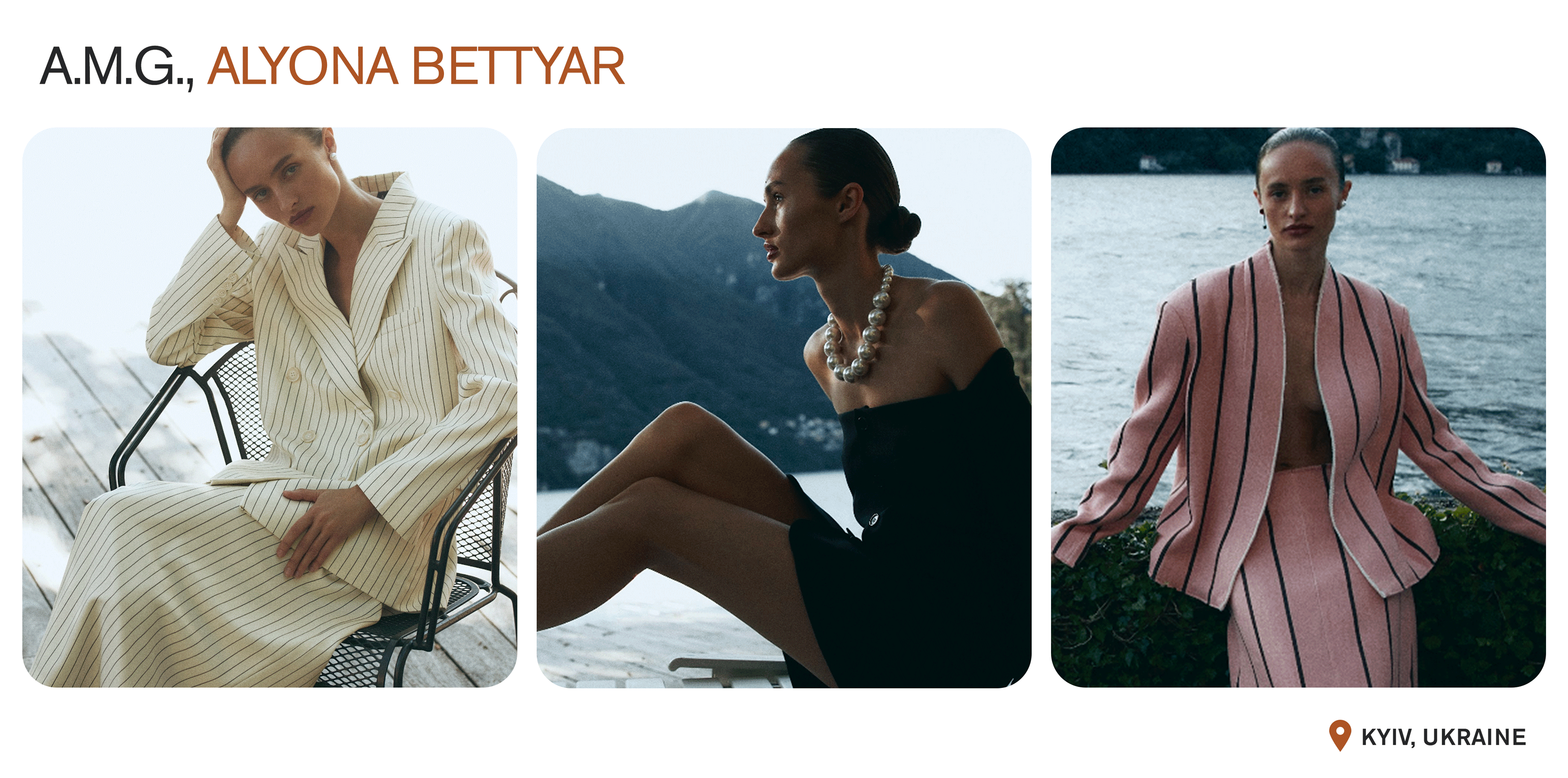
Alyona Bettyar grew up watching her grandmother work in fashion, inspired by her craft from a young age. "I often reworked her clothes," she says. "Since childhood, I've been fascinated by visual arts and saw clothing as an integral part of it, understanding that it could convey so much." It wasn't long before she transitioned away from her grandmother's garments and onto her own, experimenting with design and making pieces for herself and her friends. As more and more people began wearing and talking about her work, word spread, and soon, Bettyar began receiving formal orders and requests. Thus, A.M.G. was born.
According to Bettyar, the most important thing to remember about starting a brand is to never lose sight of the unique voice and vision that you started with. "Always stay true to your aesthetics and values," she says. Her journey—especially now that she's running a business in Kyiv, Ukraine, during wartime—hasn't been easy, and it's taken, according to Bettyar, "talent, immense perseverance, and belief in oneself and one's dream" to navigate. "Never be afraid to dream because dreams are the foundation of great achievements," she says.
Today, Bettyar's designs have been seen on the First Lady of Ukraine, Olena Zelenska, and Ukrainian singers Tina Karol and Jamala as well as actress Deborah Olayinka Ayorinde, model Kika Cerqueira Gomes, and Leandra Medine, the creator of Man Repeller. "The A.M.G. world is about strong women who work hard and know what they want," she says.
Where do you go in Kyiv when inspiration runs dry?
I go for a walk in the park or the forest, enjoying nature and silence. I breathe deeply and feel harmony. Kyiv is my hometown and my land. When I'm here, I always feel rejuvenated and energized. Kyiv is about inspiration, beauty, and fulfillment. It is my place of power.
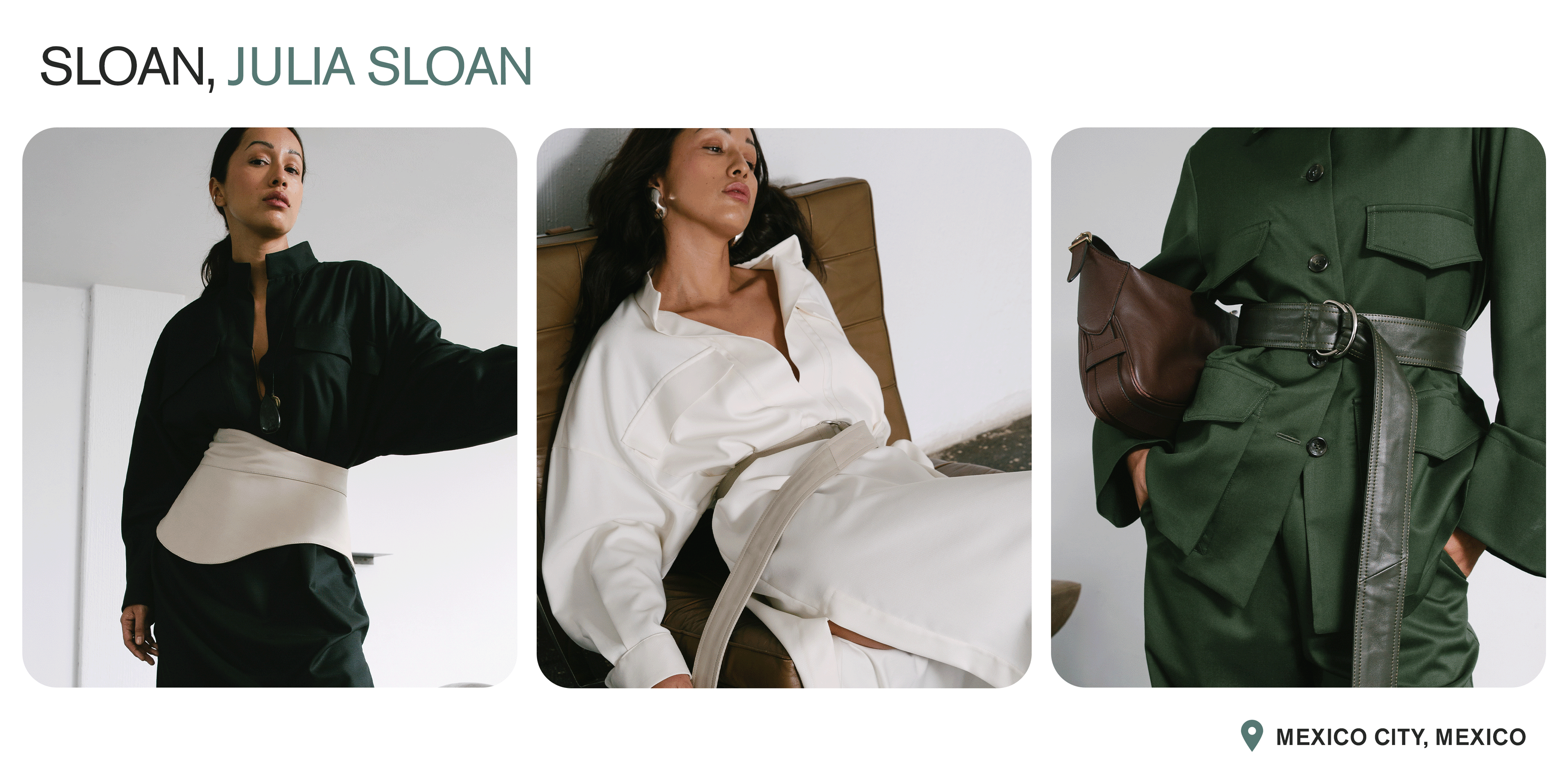
There was never a question of whether or not Mexico City–based designer Julia Sloan would be a fashion designer when she grew up. "It's all I've wanted to do," she says. "When I was younger, I was obsessed with fashion—I would dress up my dolls, myself, and my family members and beg my mom to buy me any fashion magazine I could get my hands on at the grocery store." Sloan's passion stemmed from her desire to use fashion as a form of escapism and self-expression. "I was shy as a child, and [fashion] felt like a way to transport myself anywhere I wanted to be outside of my reality," she recalls. "I was fascinated by how clothing could transform how you showed up in the world. … When I put on something that truly expressed myself, I felt like I could take on anything."
After graduating from the Parsons School of Design and working at fashion houses in New York and Paris, Sloan went to Mexico. After eight years, she started her namesake line in 2020.
From the outset, Sloan has been committed to creating a brand that celebrates and supports women. "Our designs are not just clothes but solutions—pieces that address the needs of multifaceted women, allowing them to feel fully expressed while building sustainable wardrobes," she says. "Each piece is expertly tailored with lasting fabrics, [and] the designs balance sophistication with pragmatic utility. Our pieces give space to inhabit the complex dimensions of women's lives." Furthermore, she has also built an at-home production network of female artisans in Mexico, empowering them to earn flexible, continuous income while caring for their families and households.
While women play a huge role in influencing Sloan's strong, minimal, natural, and elegant designs, so do ethicality and the city she calls home. "My design inspiration comes from the soulfulness of Mexico City," she says. "There's a strong female energy that I constantly feel in my community, and I look to transmit that through our collections. Overproduction and waste have also inspired me to enforce a business model that provides sustainable and ethical practices through thoughtful drops."
Where do you go in Mexico City when inspiration runs dry?
I try to get to as many galleries, museums, and bookstores as possible. I love the Biblioteca Vasconcelos. I also love just sitting at a sidewalk café and people-watching.
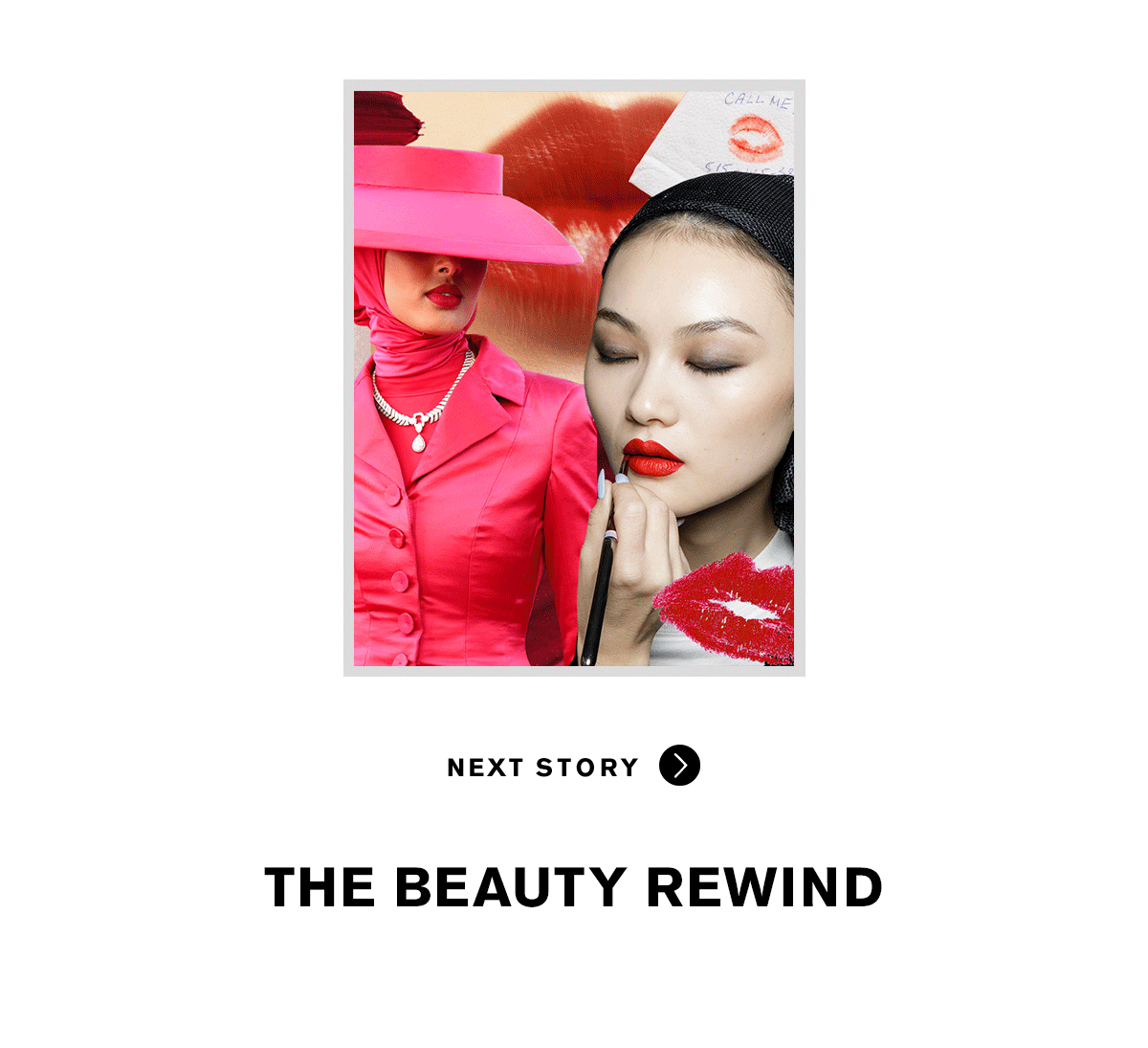
Eliza Huber is an NYC-based senior fashion editor who specializes in trend reporting, brand discovery, and the intersection of sports and fashion. She joined Who What Wear in 2021 from Refinery29, the job she took after graduating with a business degree from the University of Iowa. She's launched two columns, Let's Get a Room and Ways to Wear; profiled Dakota Fanning, Diane Kruger, Katie Holmes, Gracie Abrams, and Sabrina Carpenter; and reported on everything from the relationship between Formula One and fashion to the top runway trends each season. Eliza lives on the Upper West Side and spends her free time researching F1 fashion imagery for her side Instagram accounts @thepinnacleoffashion and @f1paddockfits, watching WNBA games, and scouring The RealReal for discounted Prada.
-
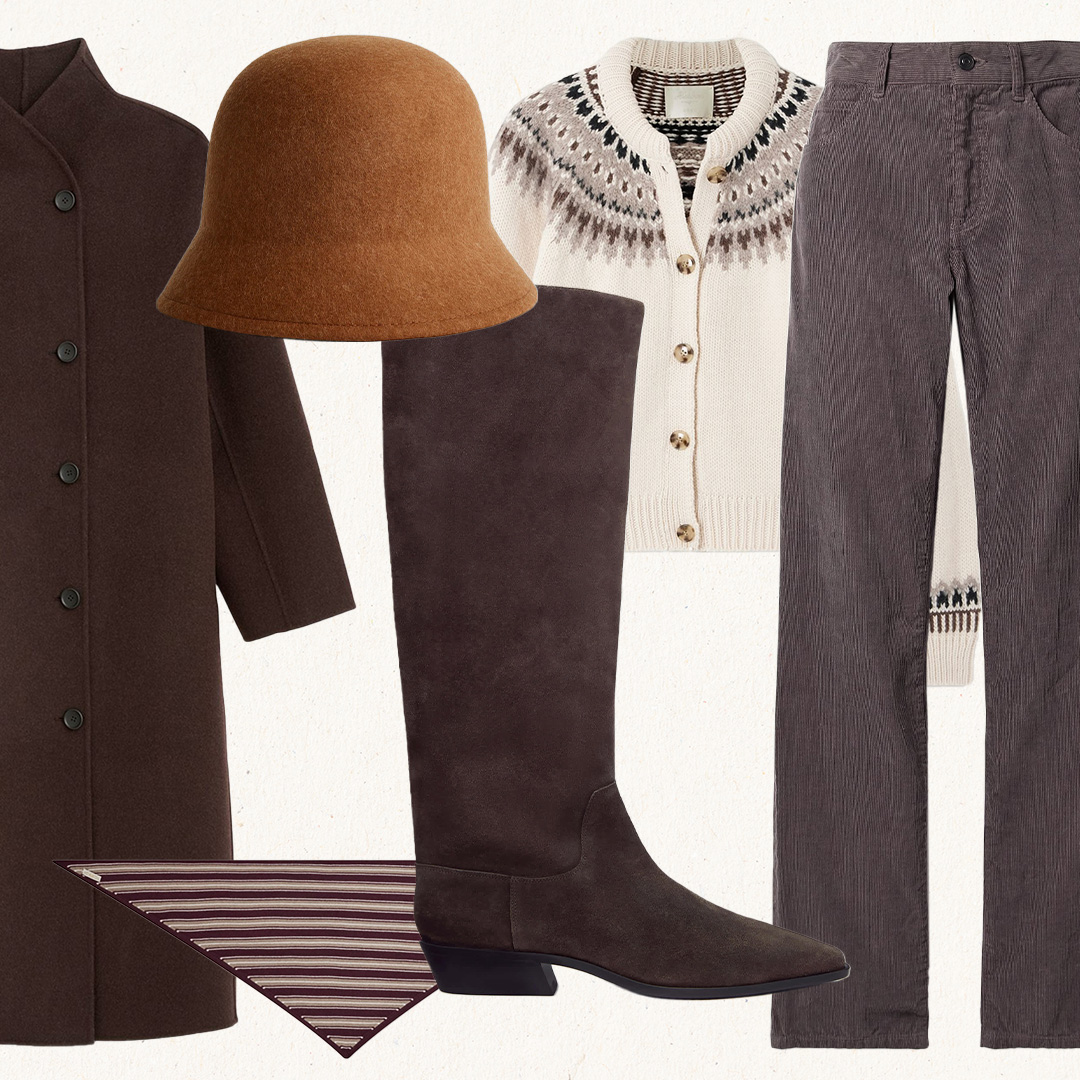 10 Winter 2026 Wardrobe Staples to Gift to Yourself This December
10 Winter 2026 Wardrobe Staples to Gift to Yourself This DecemberYou deserve it.
-
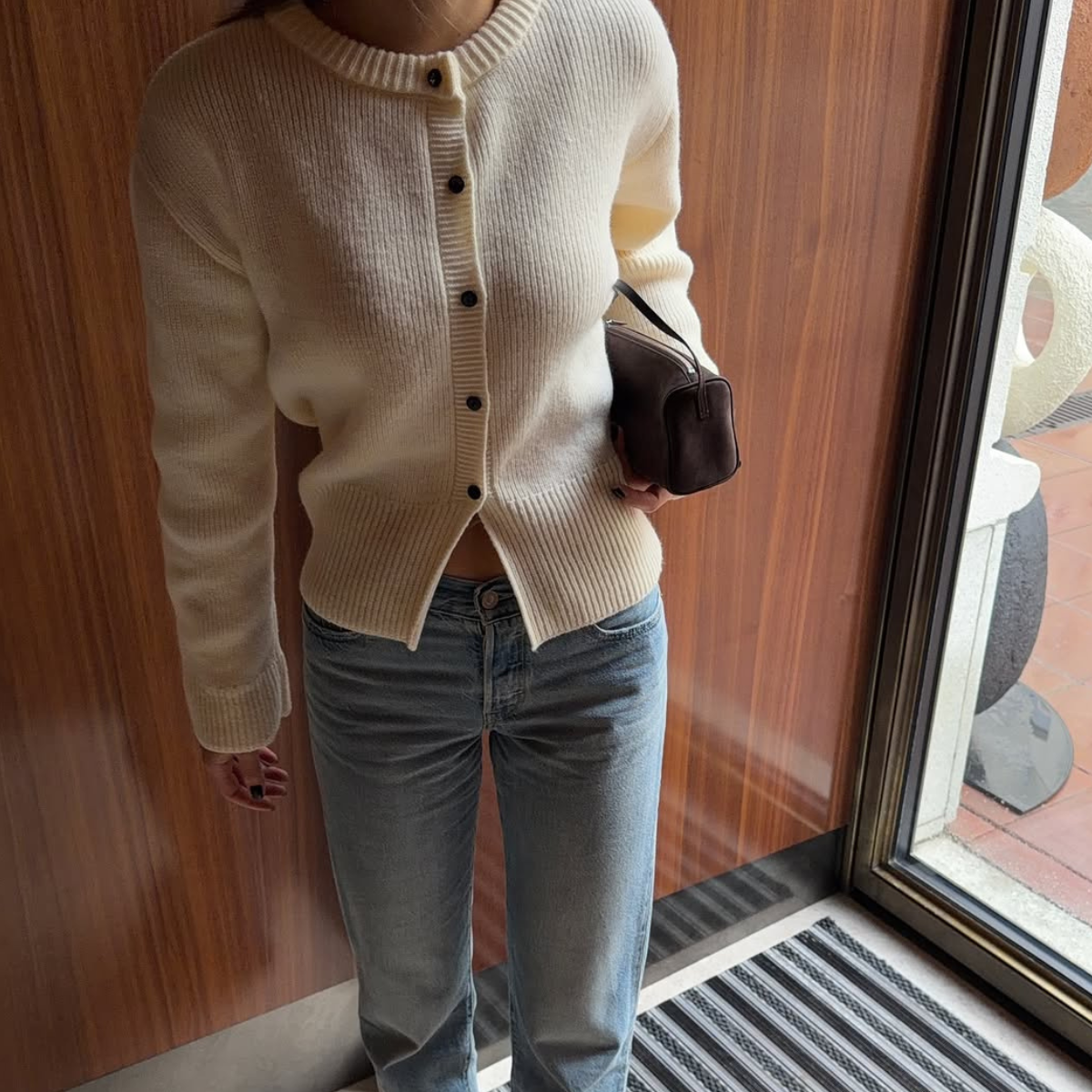 5 Sweater Styles Every 2025 Winter Wardrobe Needs
5 Sweater Styles Every 2025 Winter Wardrobe NeedsOur must-have knitwear list.
-
 If Chic Jeans-and-Boots Outfits Are the Goal, Don't Miss These Standout Picks From Zara, Madewell, and Nordstrom
If Chic Jeans-and-Boots Outfits Are the Goal, Don't Miss These Standout Picks From Zara, Madewell, and NordstromBring on a stylish fall-and-winter closet.
-
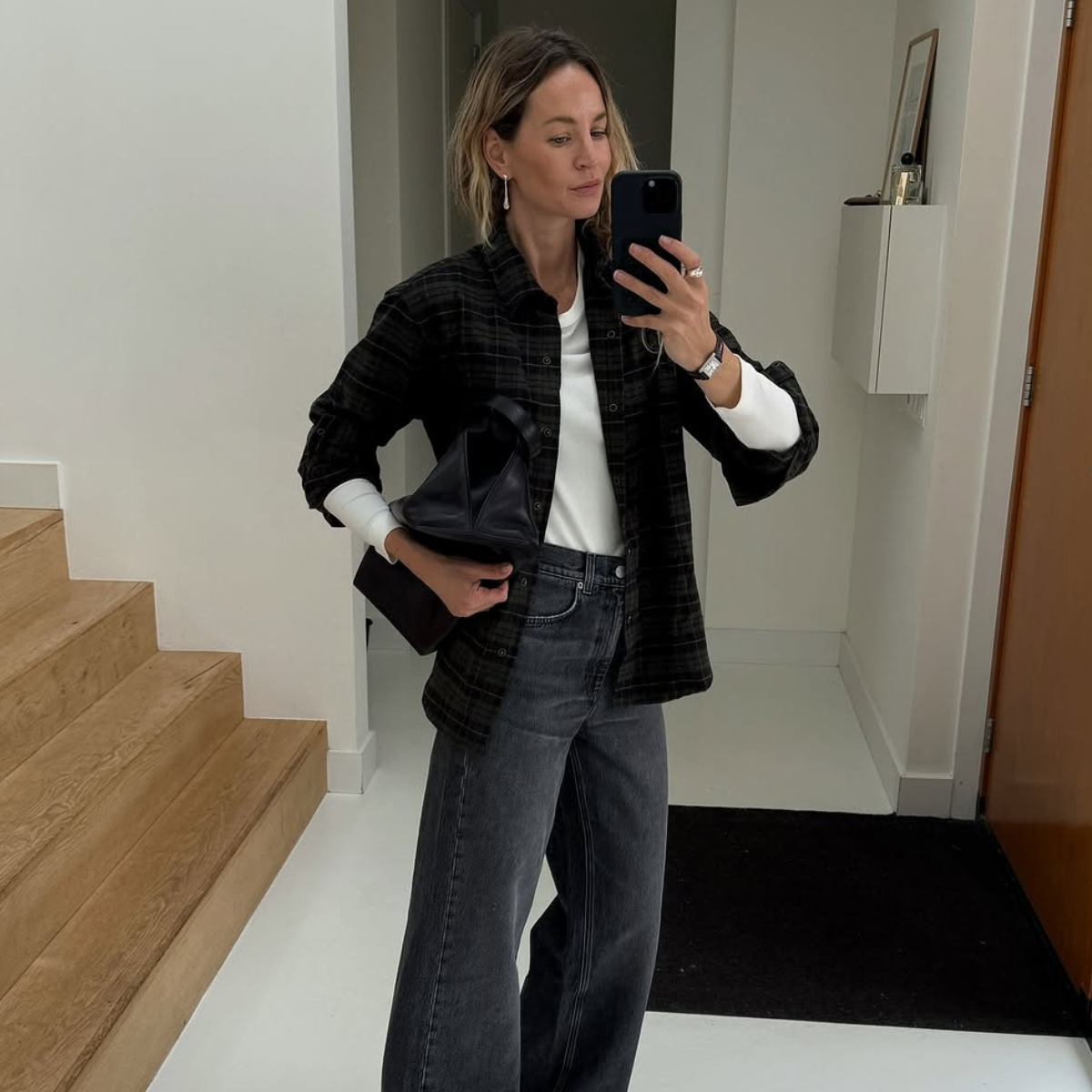 Nordstrom Just Dropped the 5 Winter Trends All the Coolest Girls Will Be Wearing Next Month
Nordstrom Just Dropped the 5 Winter Trends All the Coolest Girls Will Be Wearing Next MonthShop the edit inside.
-
 Paige DeSorbo Just Gave Us an Exclusive Holiday Gift Guide—It's Giving Grown-Up Eloise at the Plaza
Paige DeSorbo Just Gave Us an Exclusive Holiday Gift Guide—It's Giving Grown-Up Eloise at the PlazaWe'll take one of everything.
-
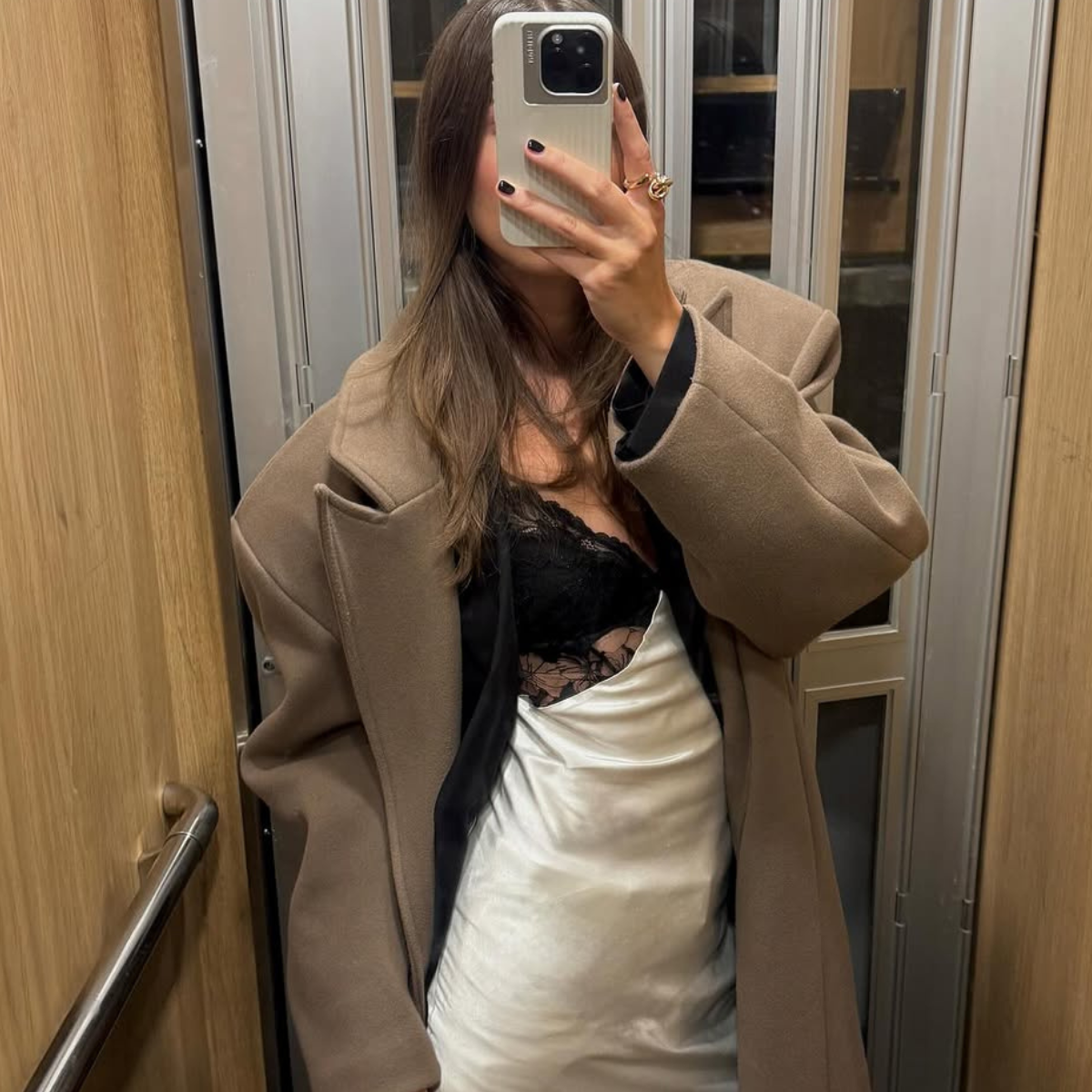 It's Here: Our Fancy Winter Dress Edit
It's Here: Our Fancy Winter Dress EditConsider your holiday plans covered.
-
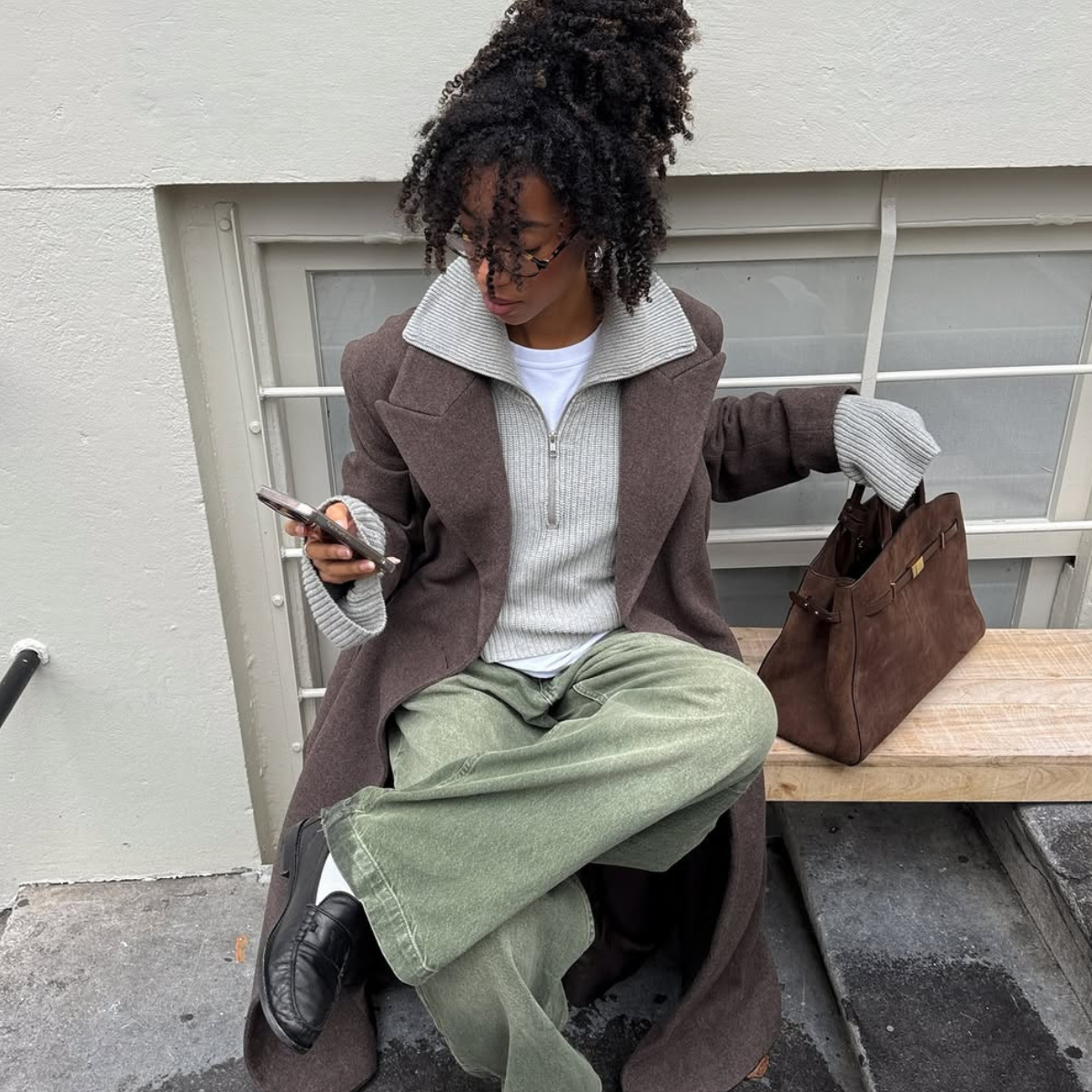 30 Under-$500 Winter Items I'm Absolutely Buying From Revolve Next Month
30 Under-$500 Winter Items I'm Absolutely Buying From Revolve Next MonthYou should too.
-
 Every Stylish Woman Should Have This Coat Style in Her Winter Wardrobe
Every Stylish Woman Should Have This Coat Style in Her Winter WardrobeDo you own it?
